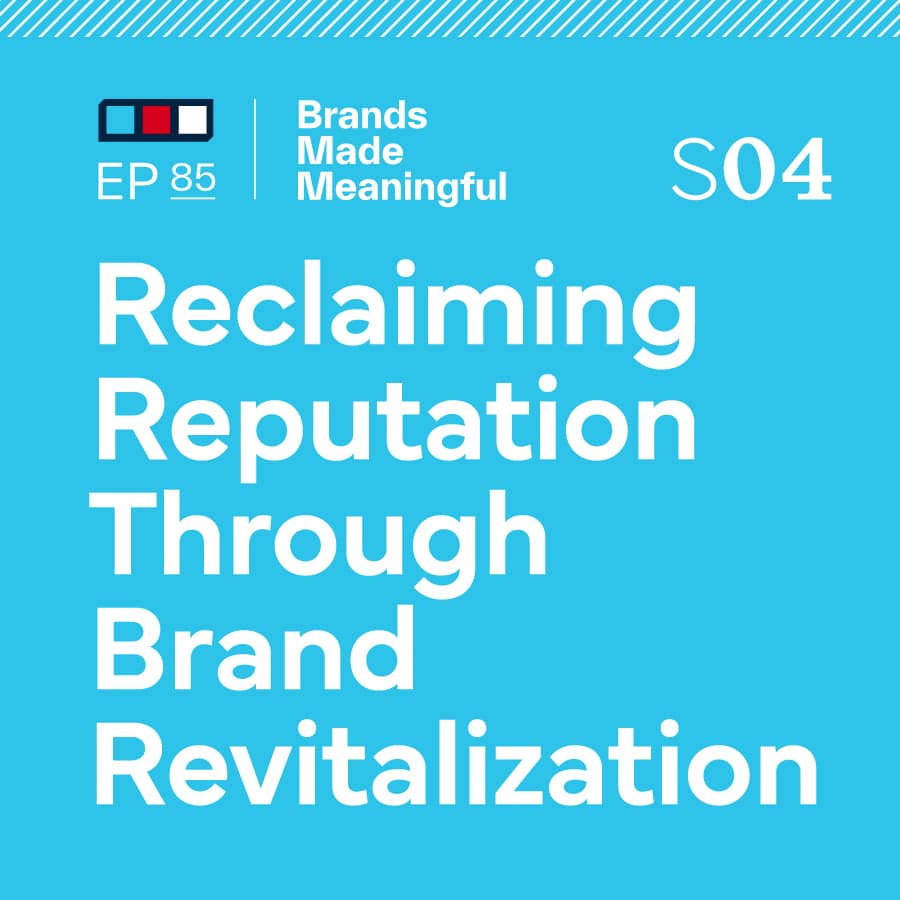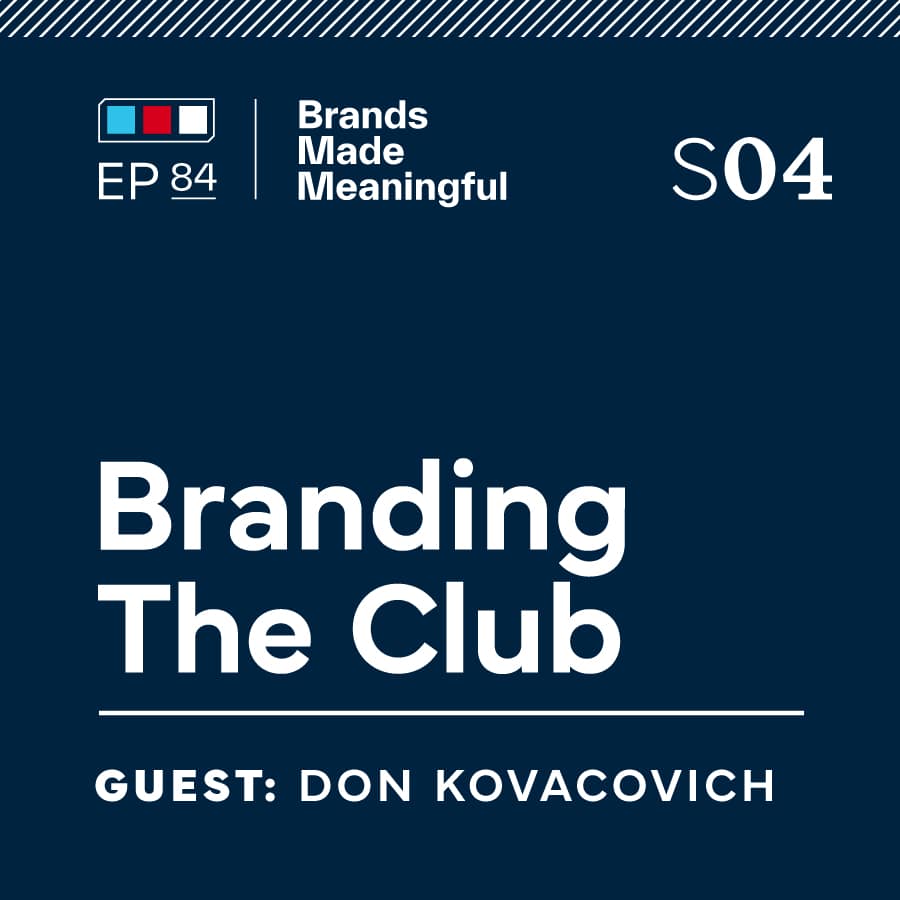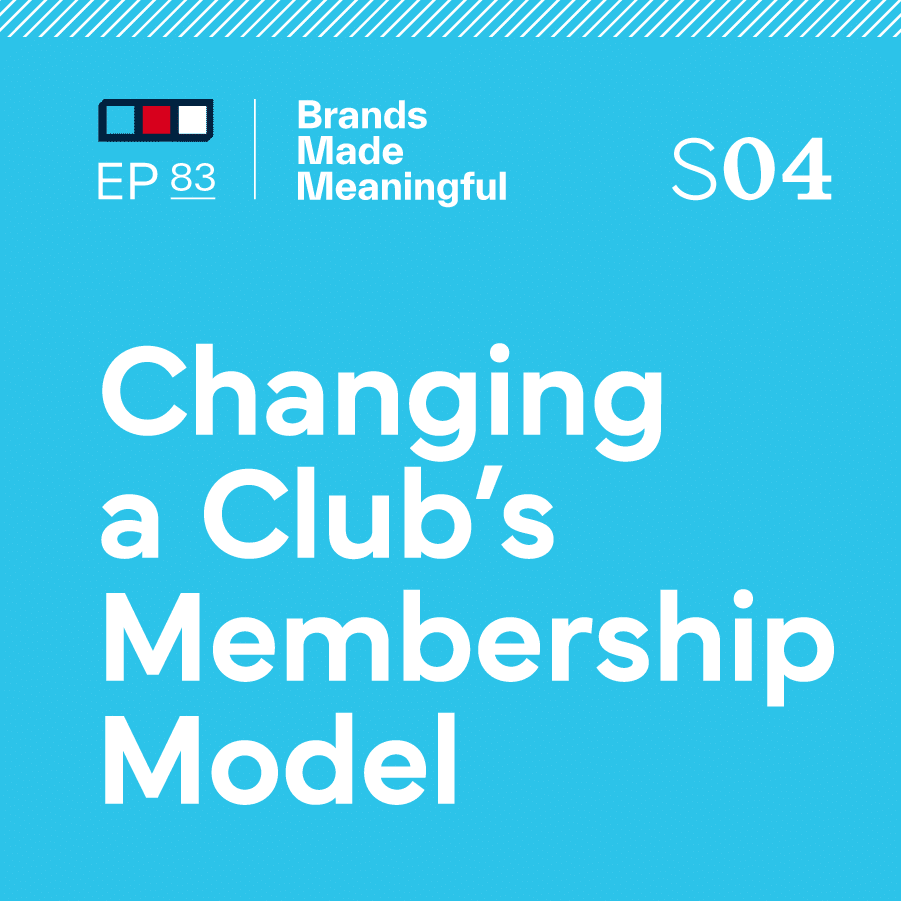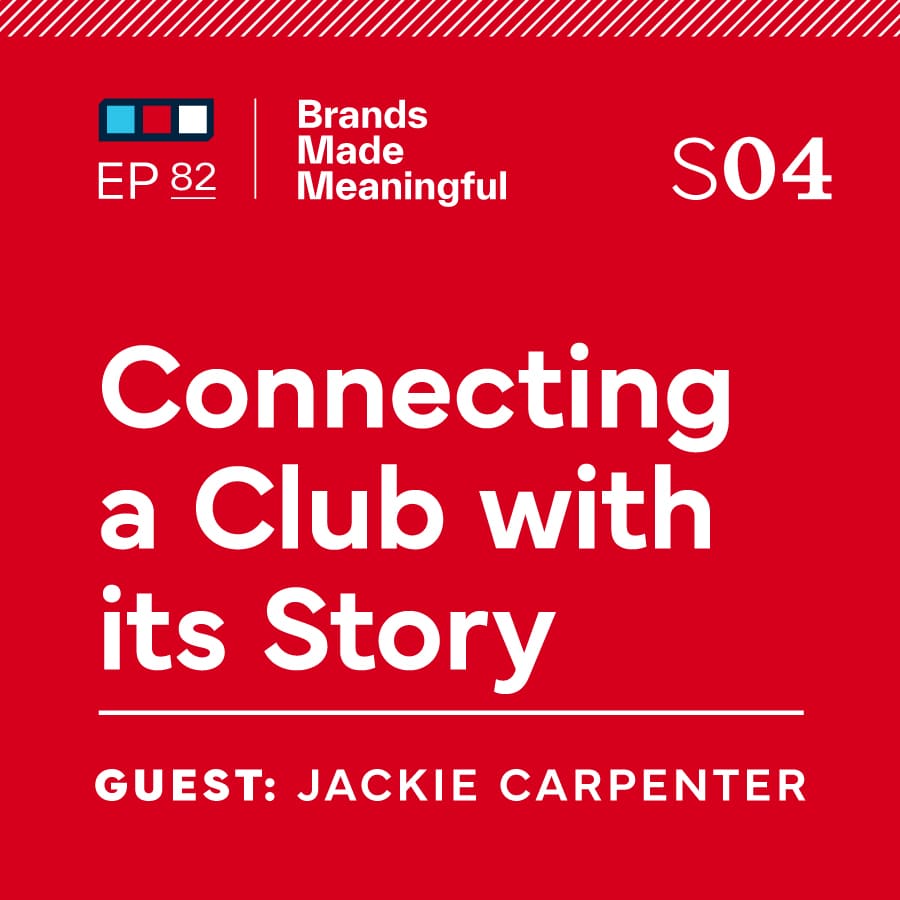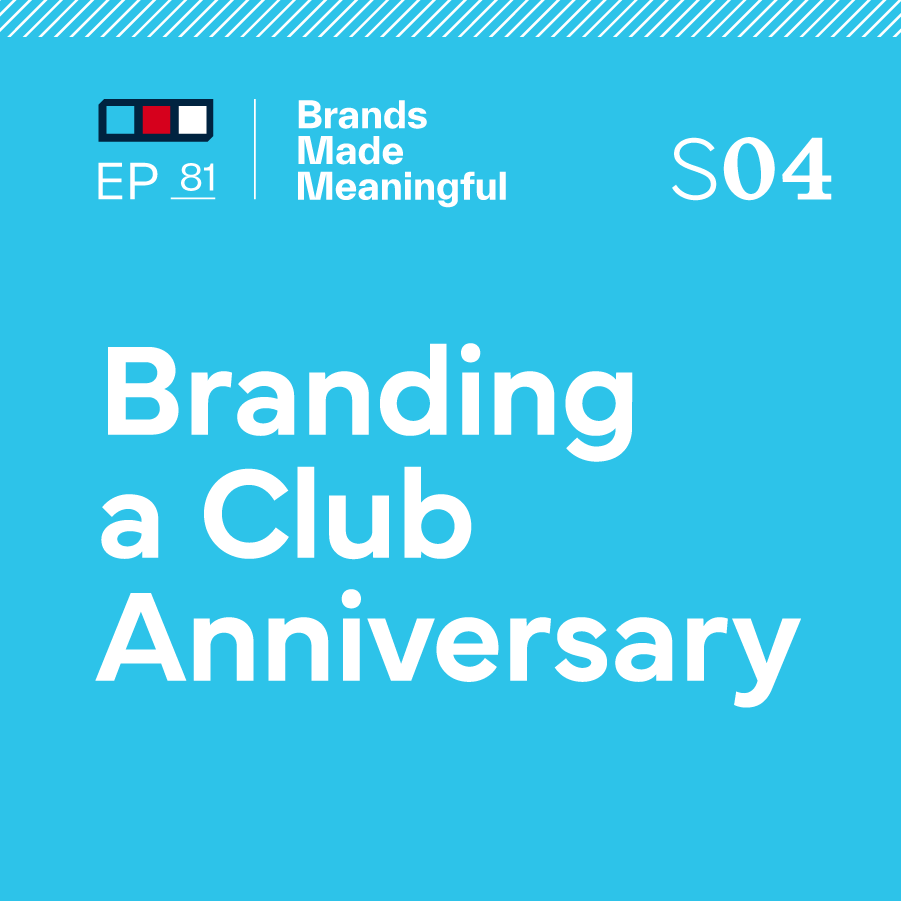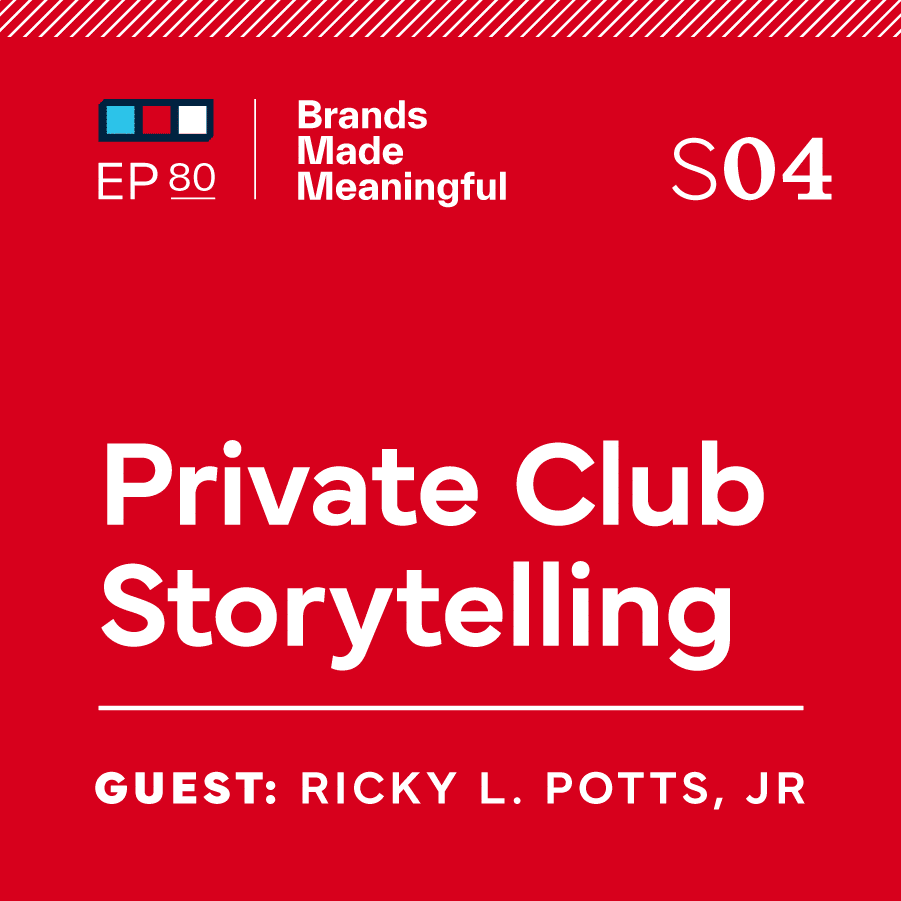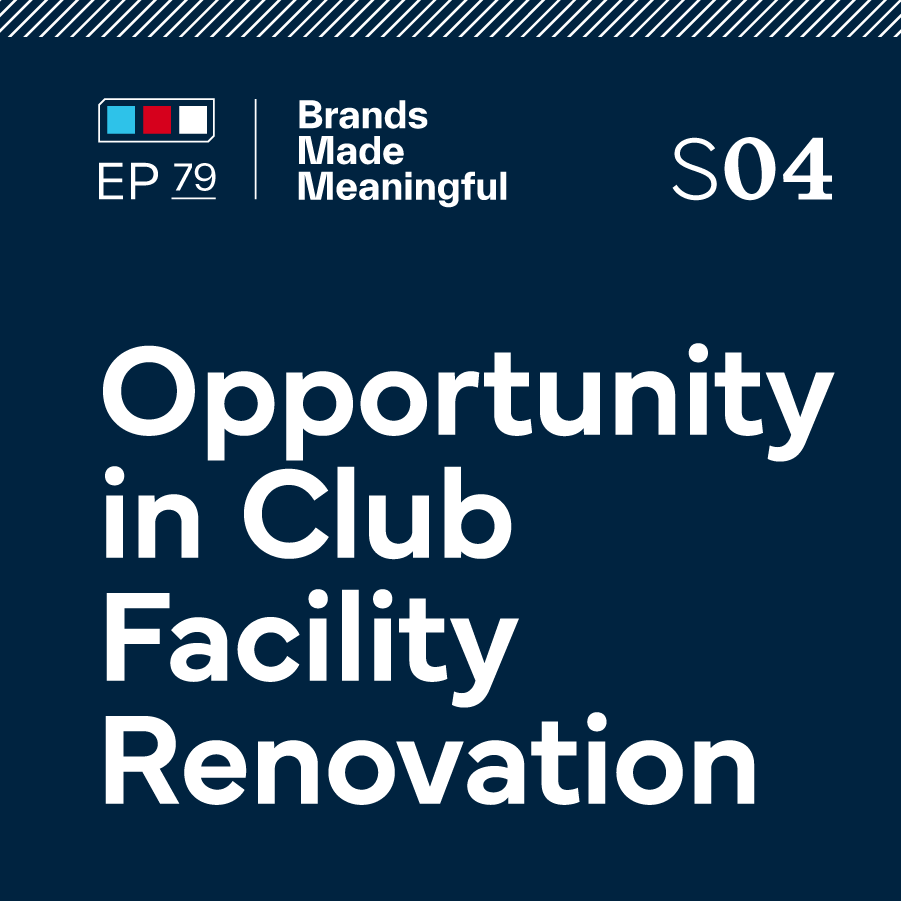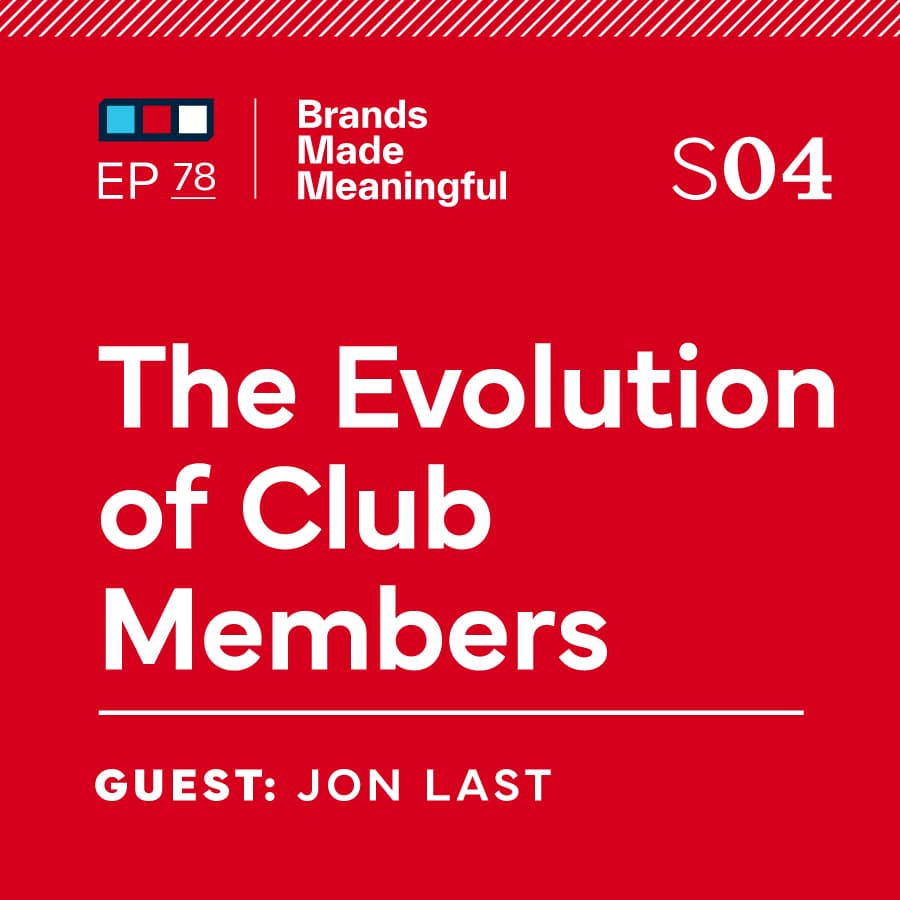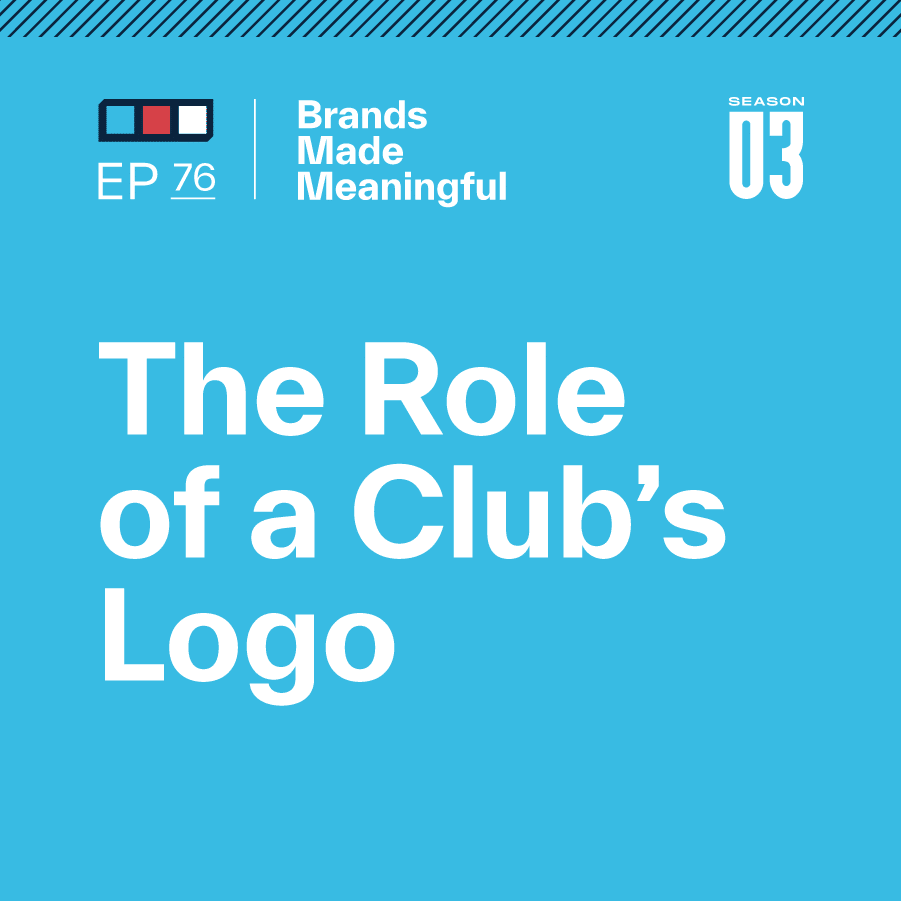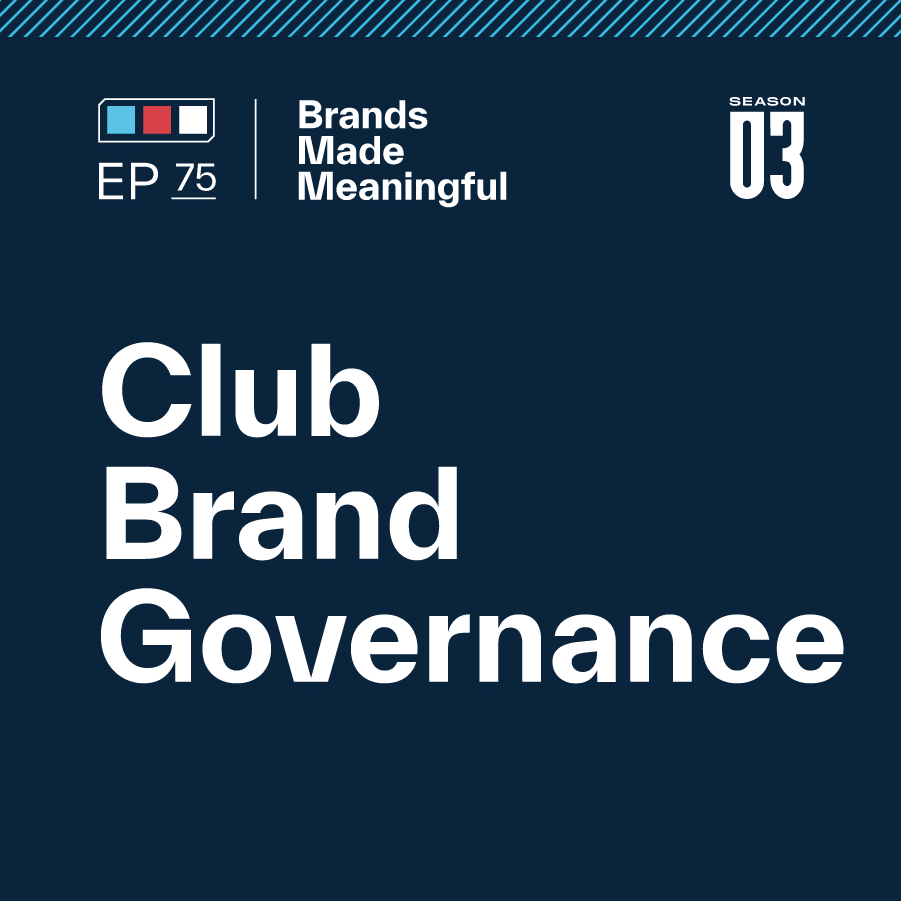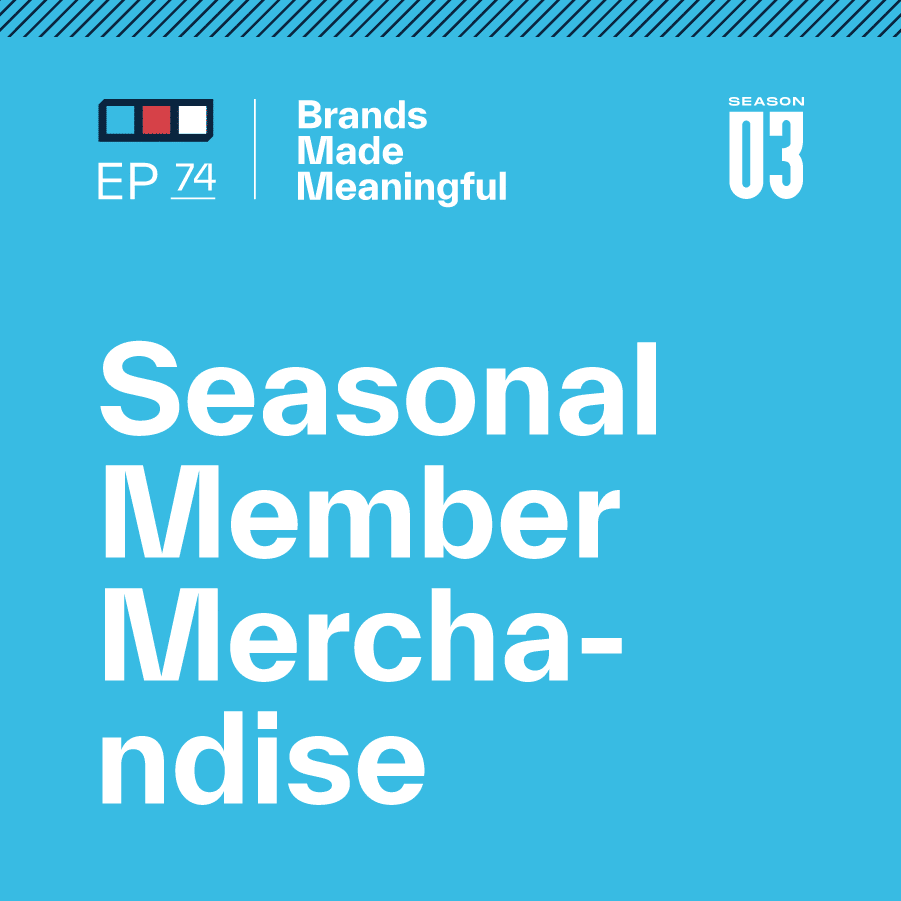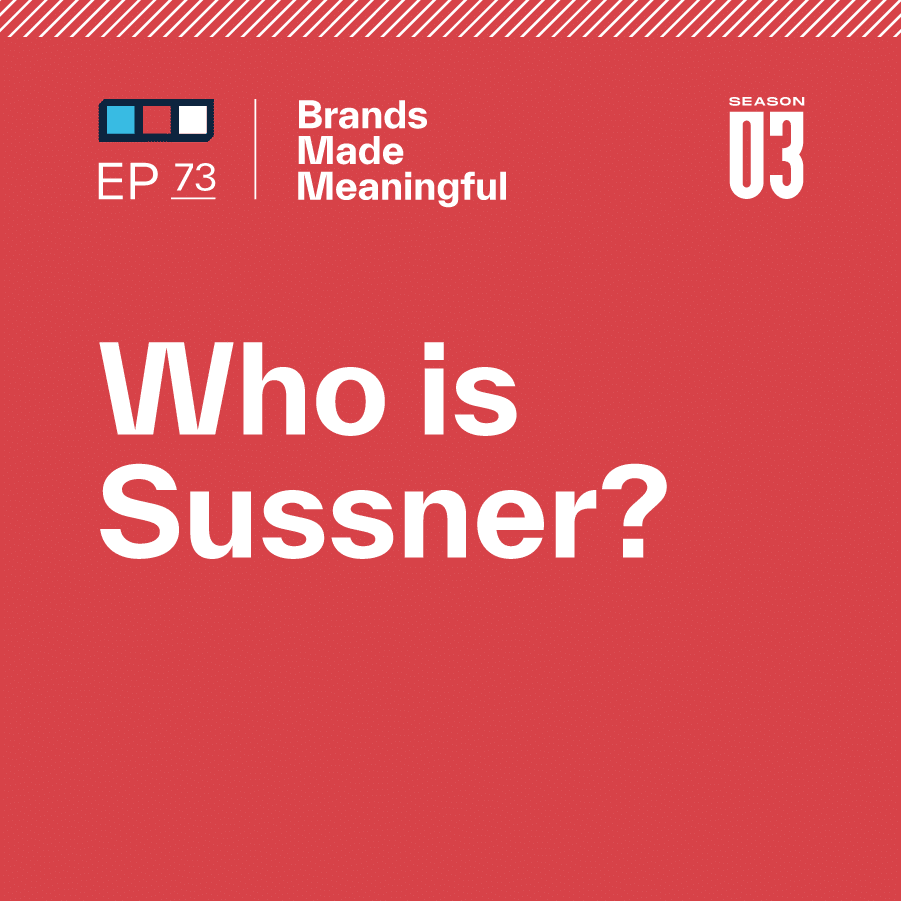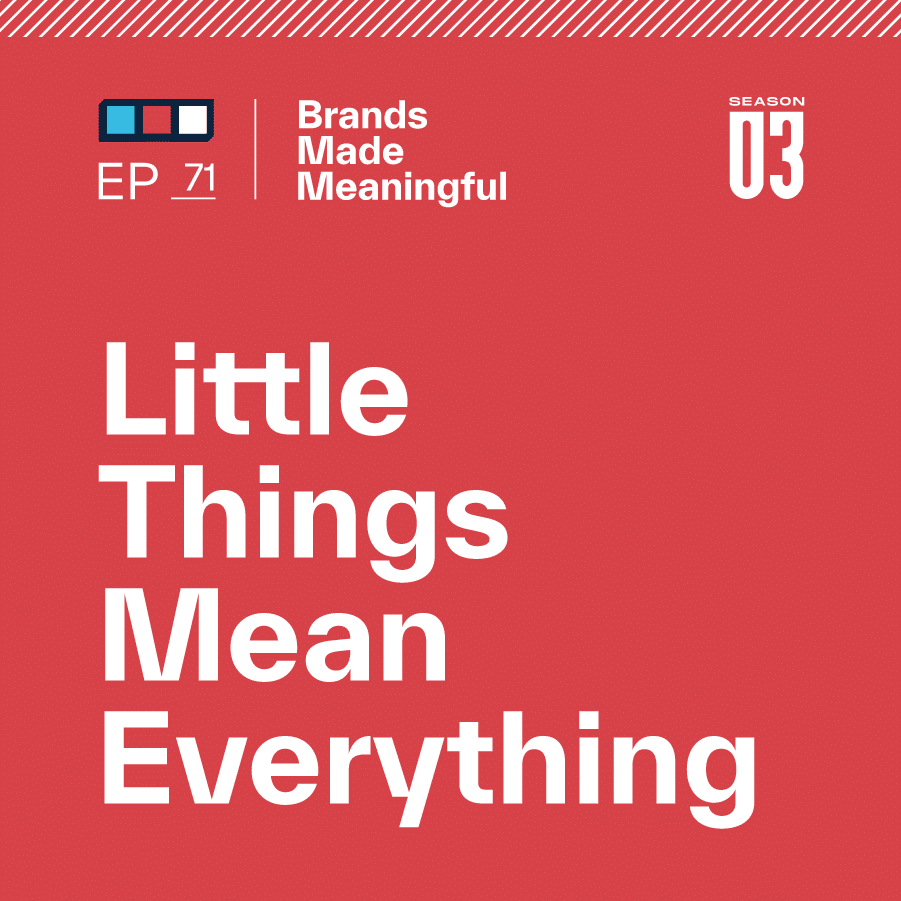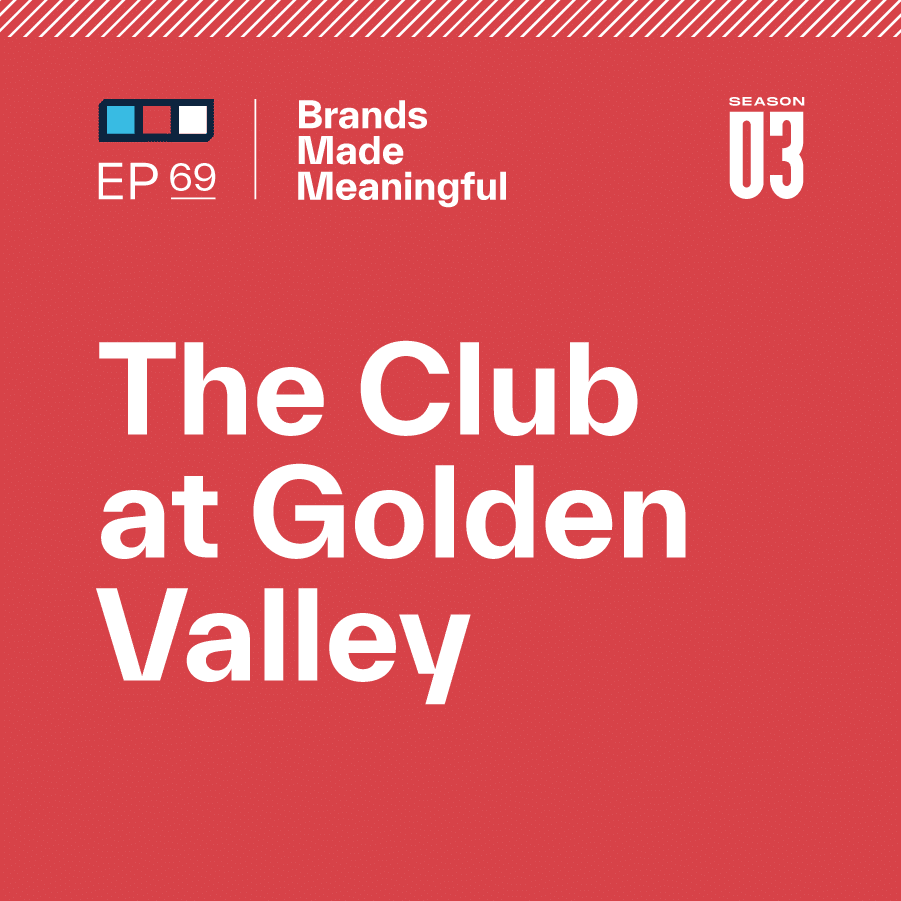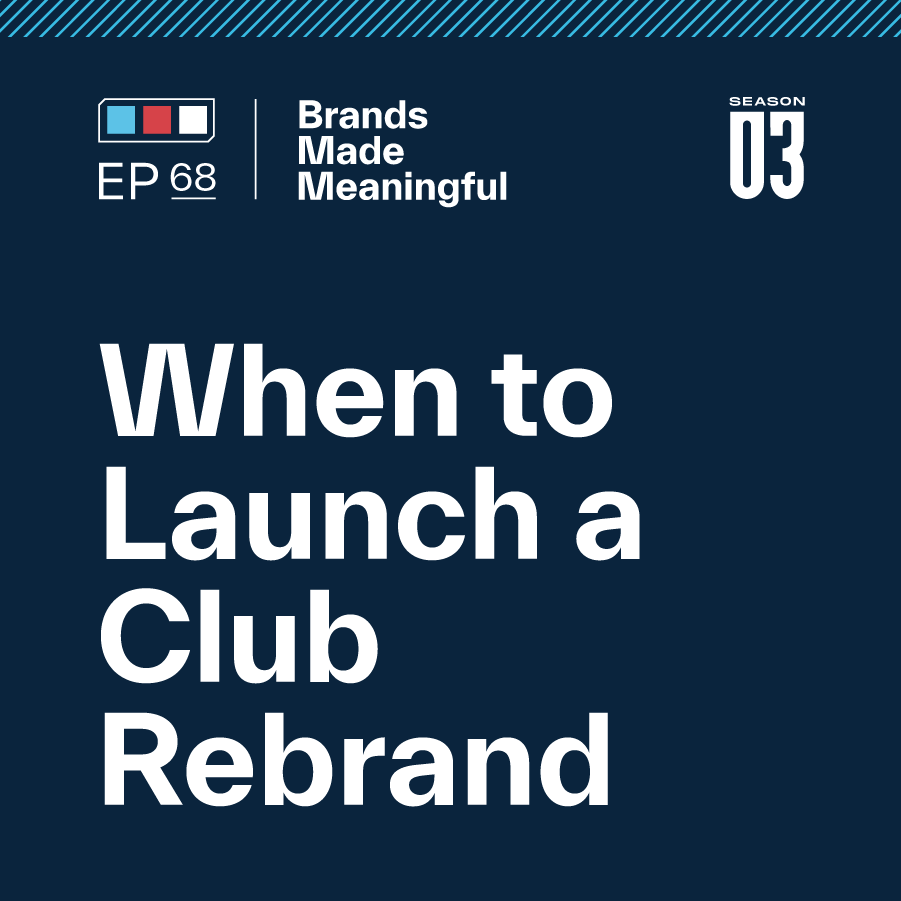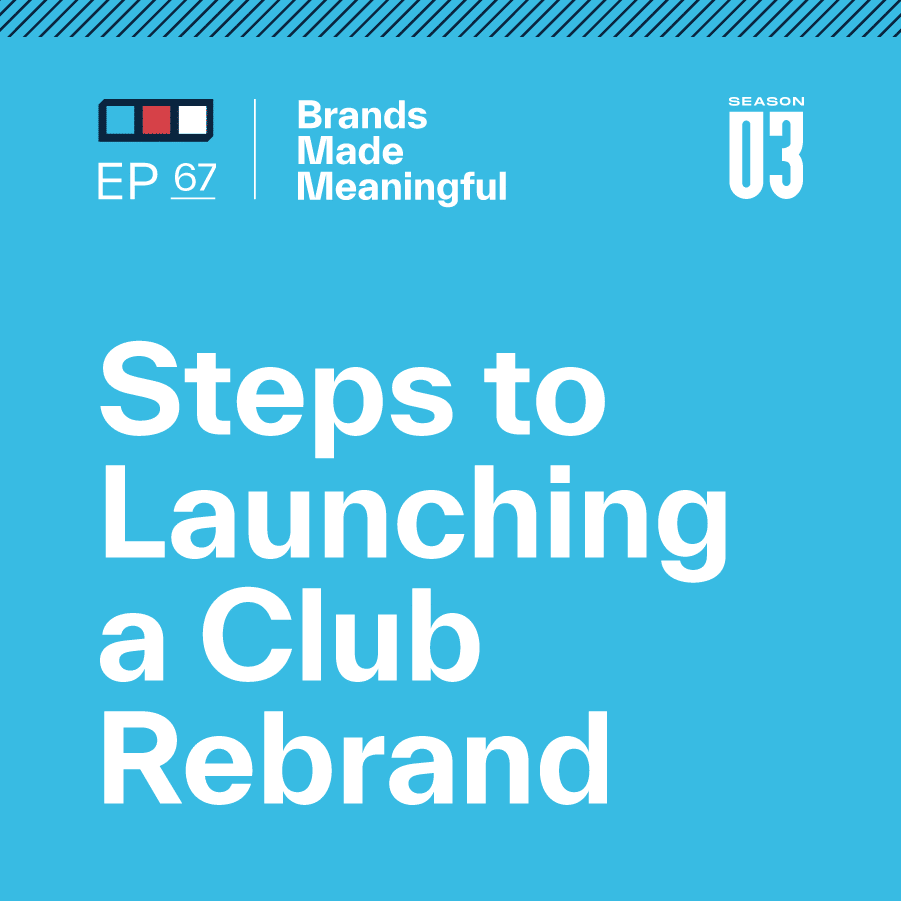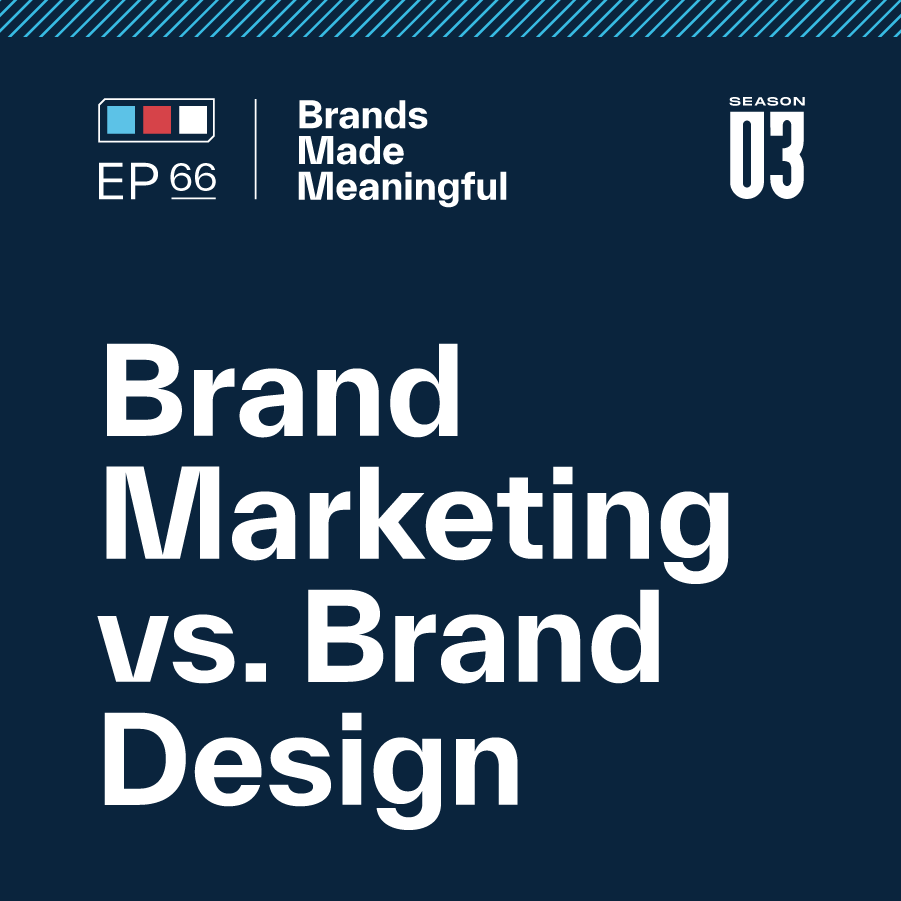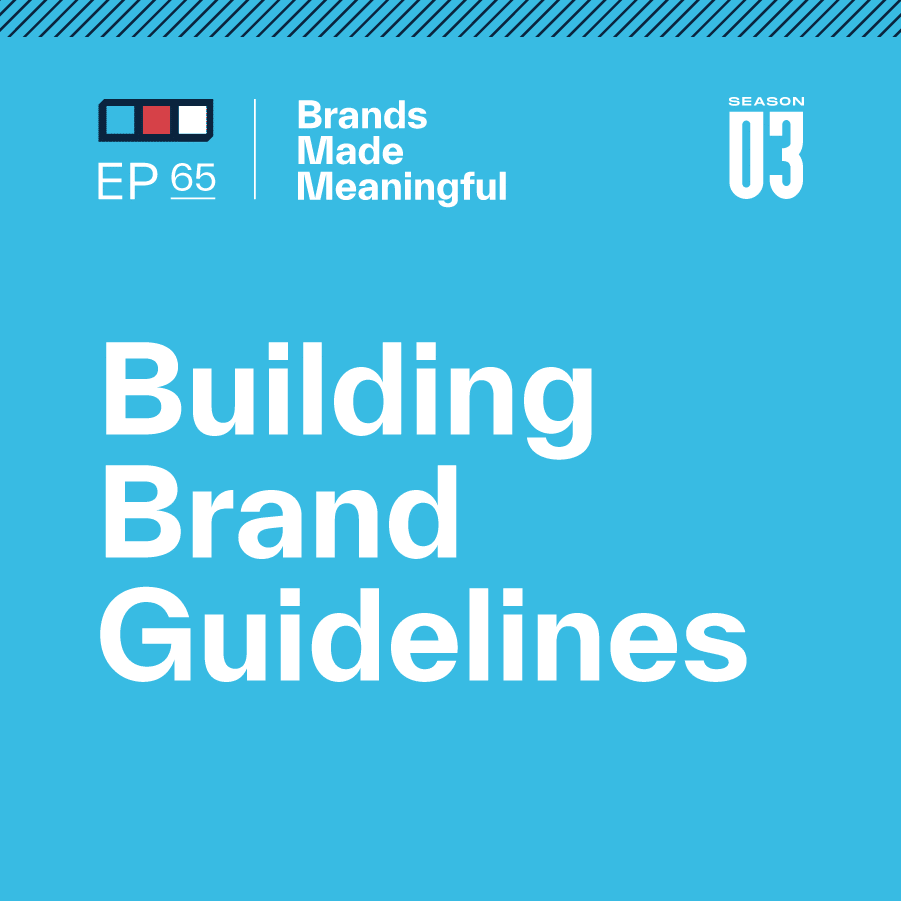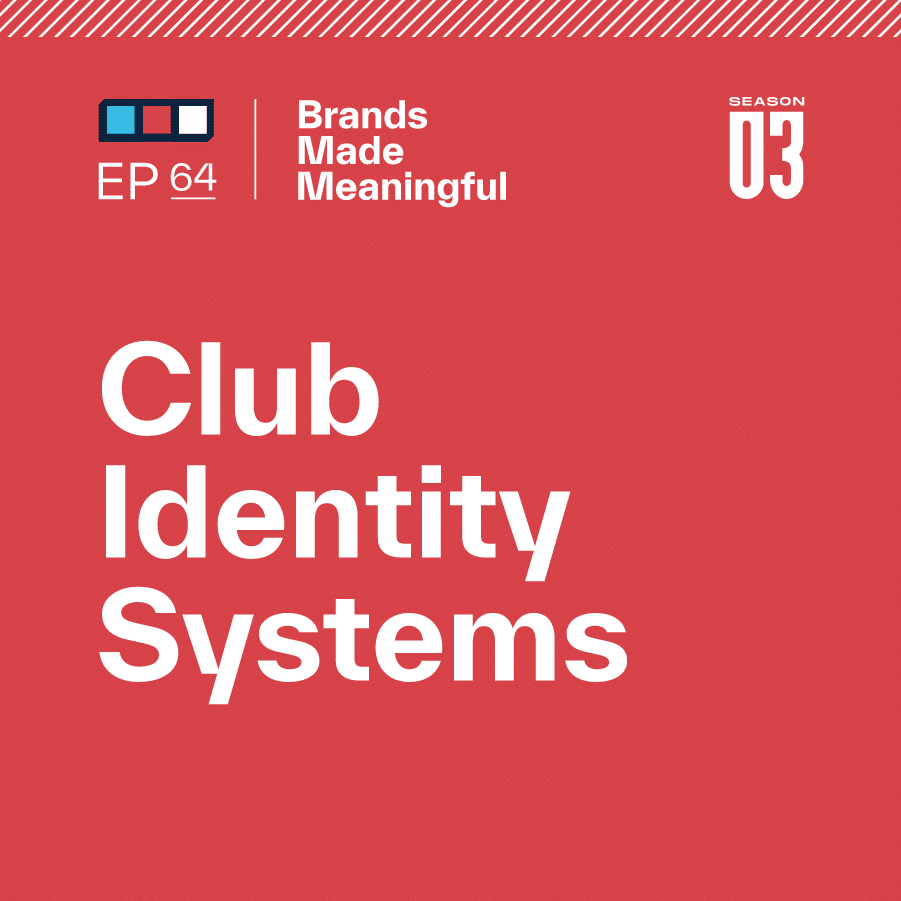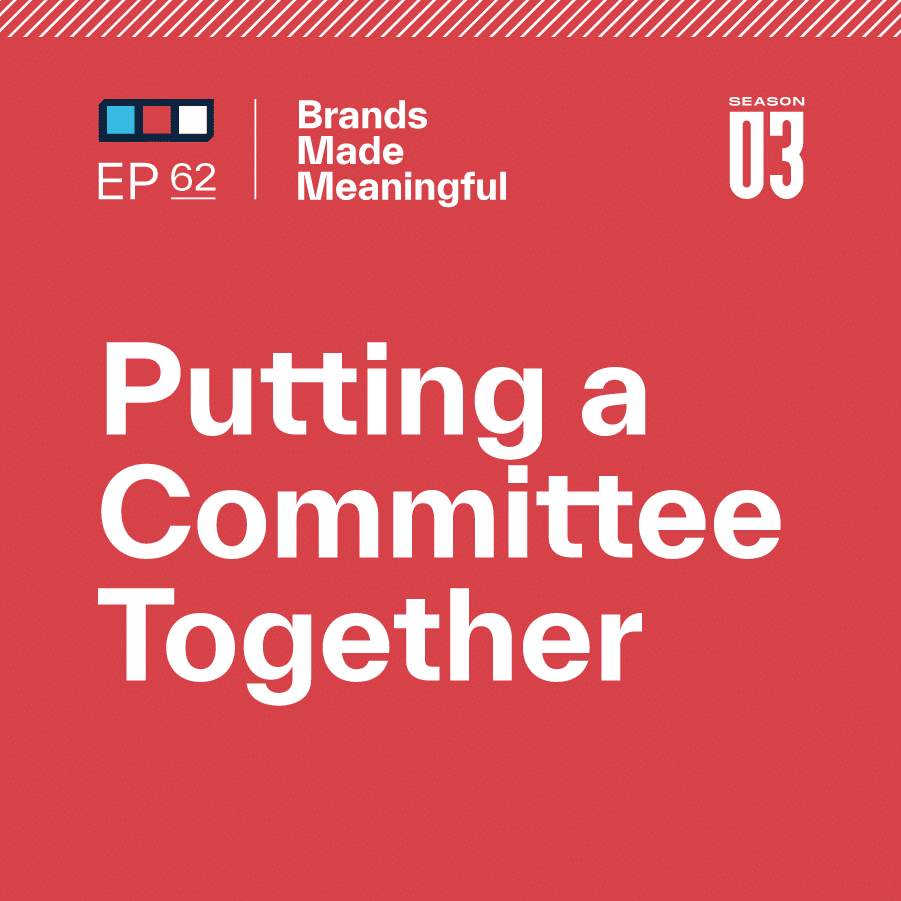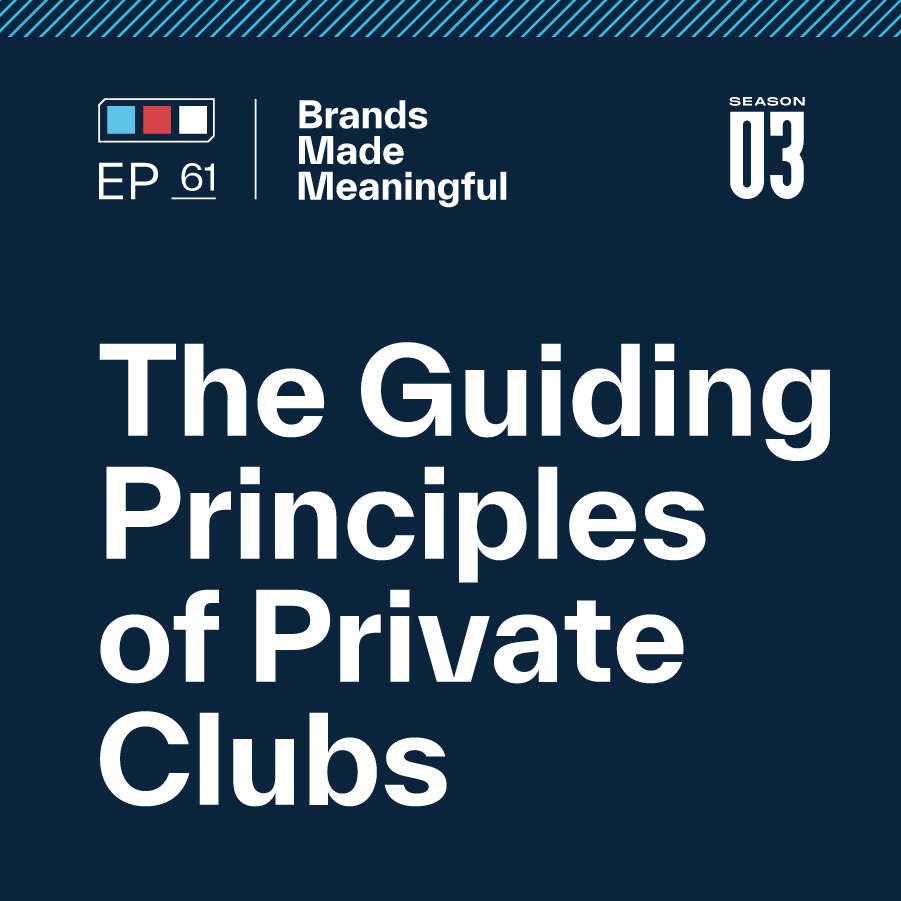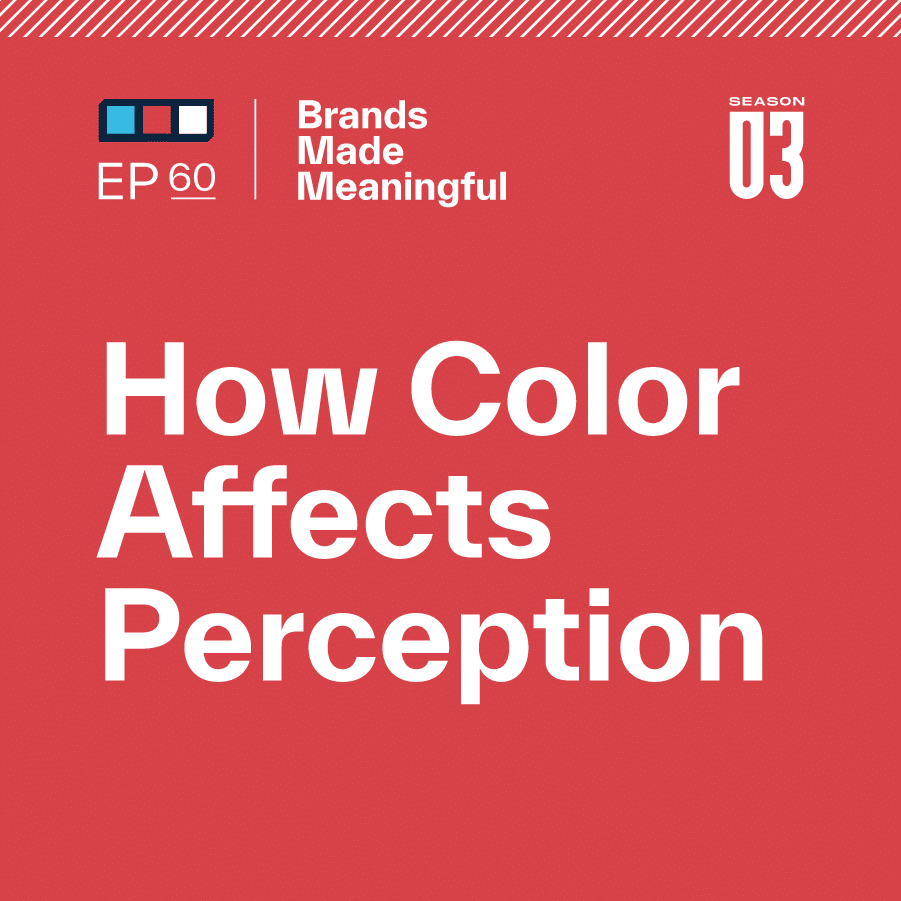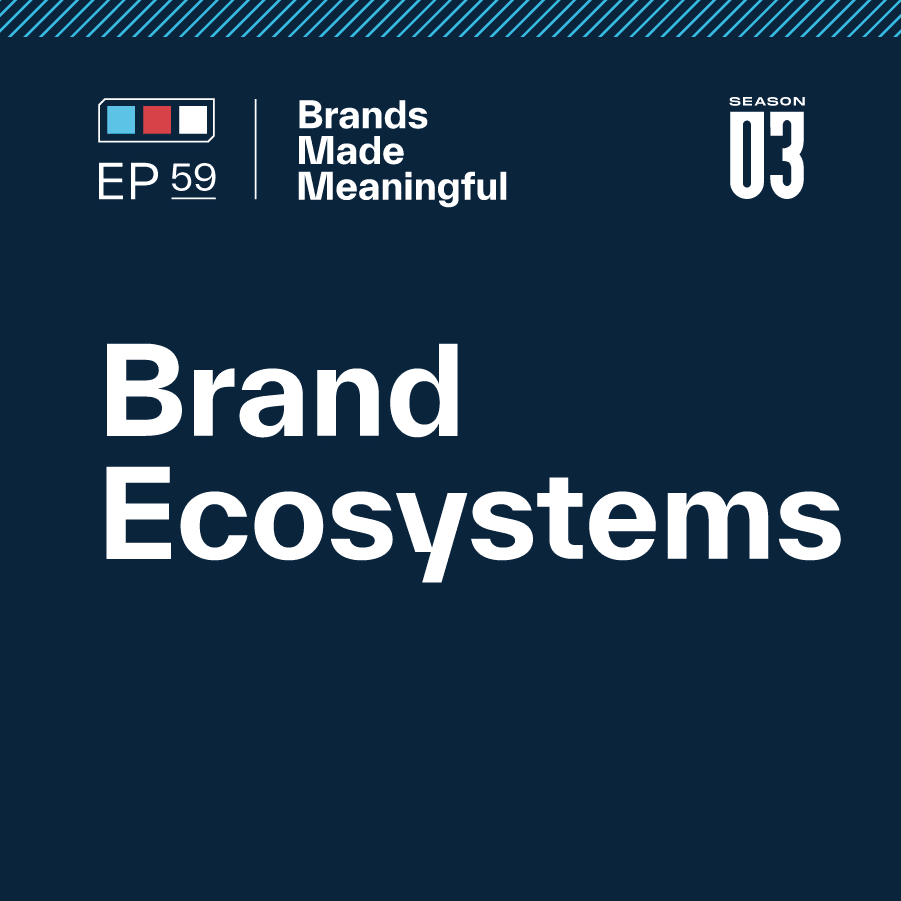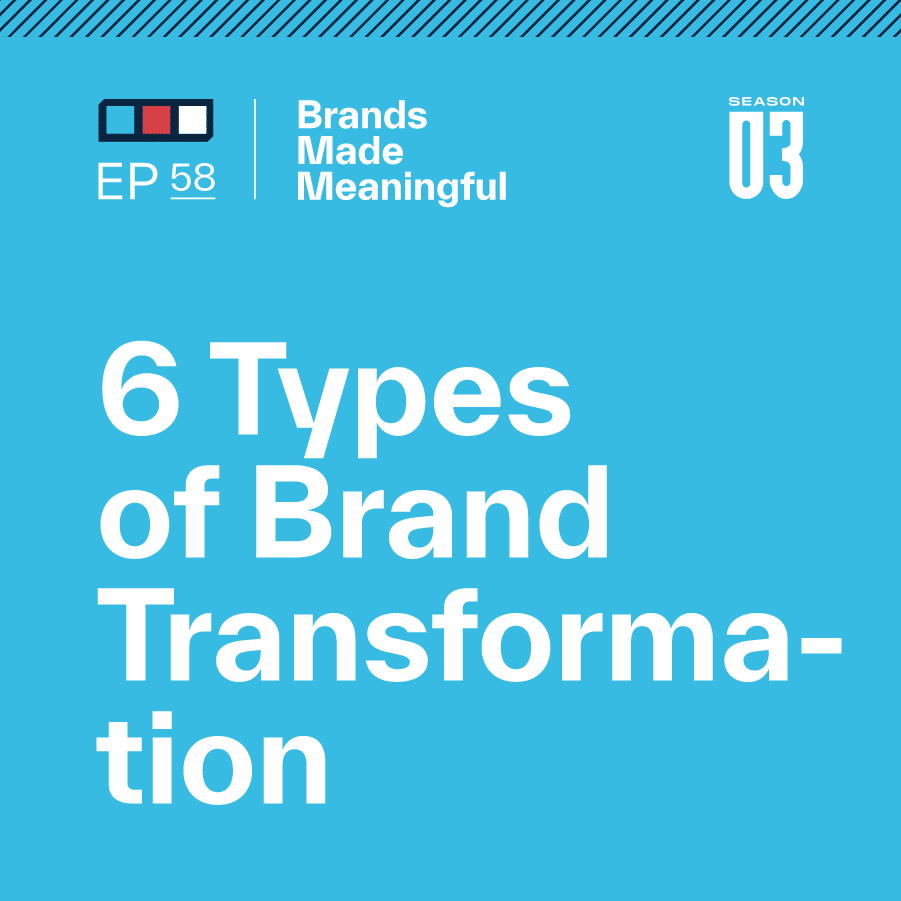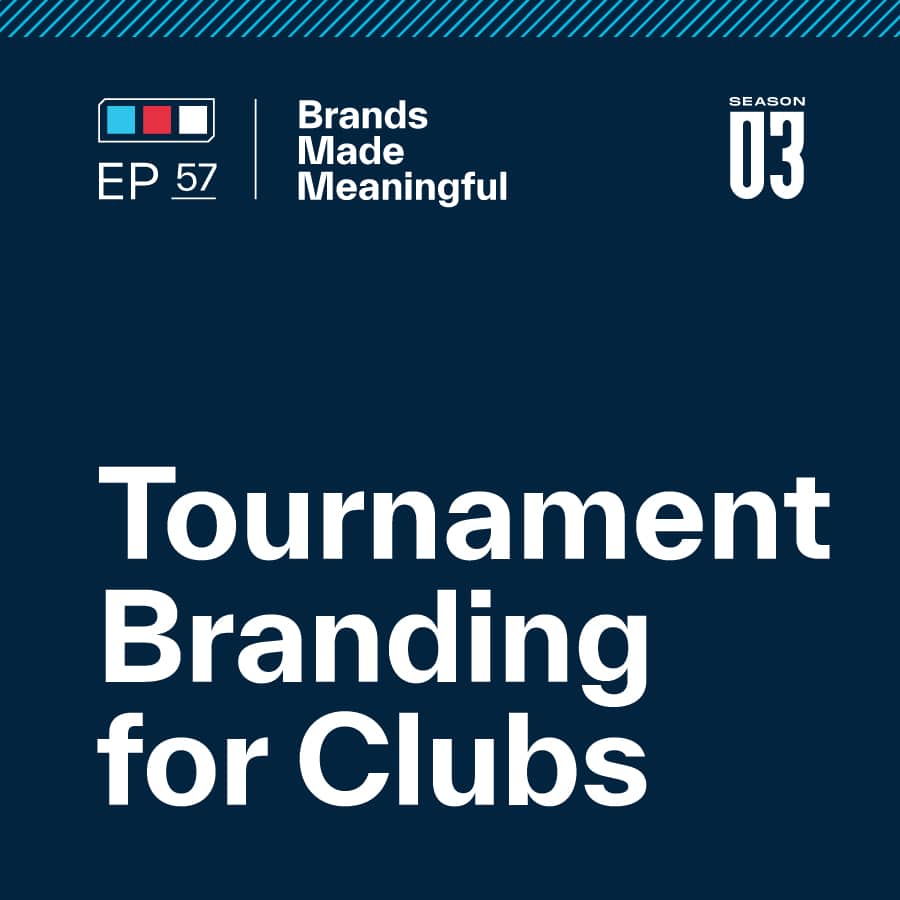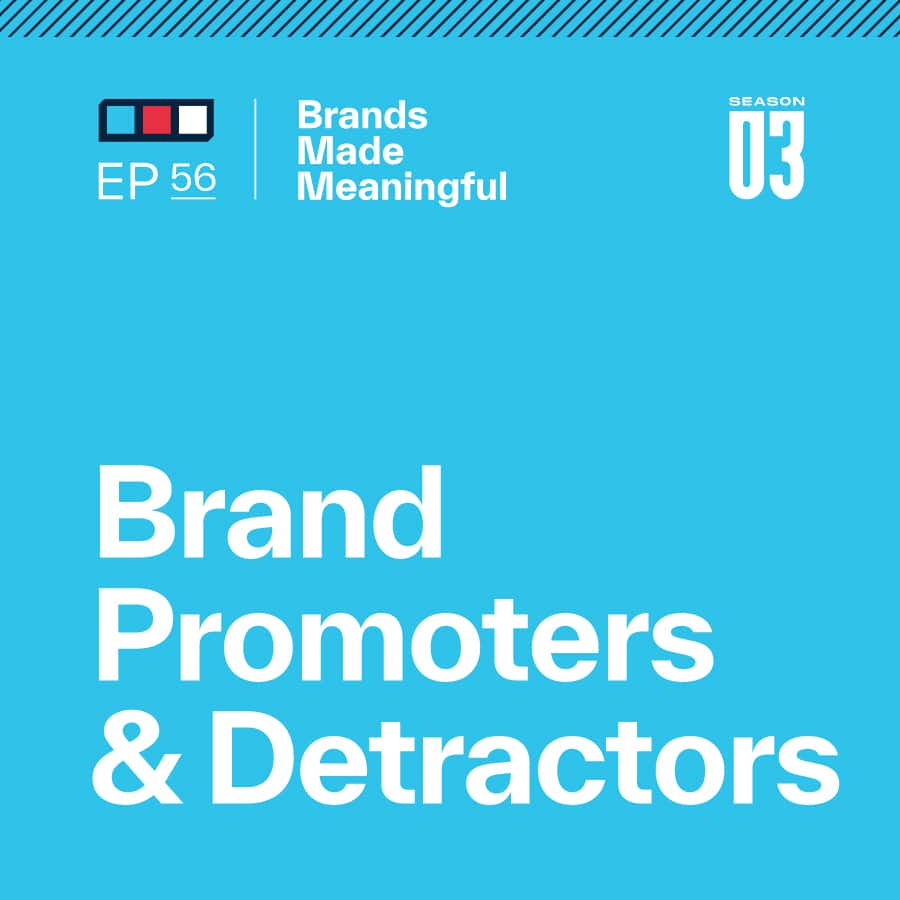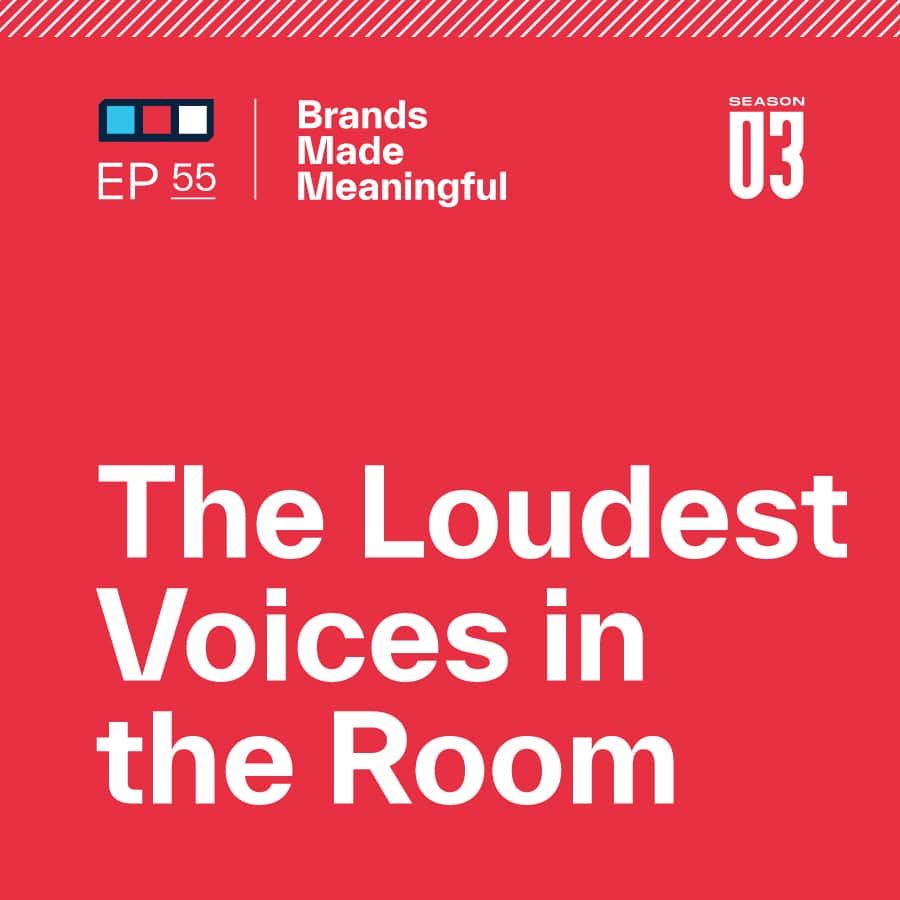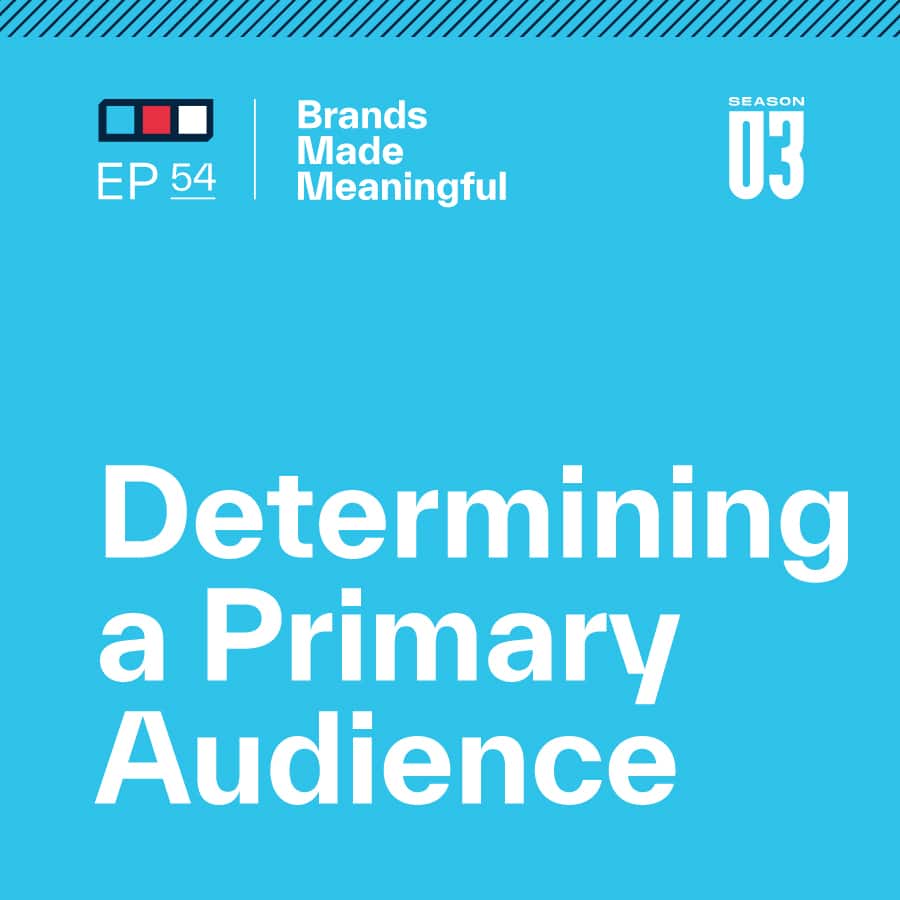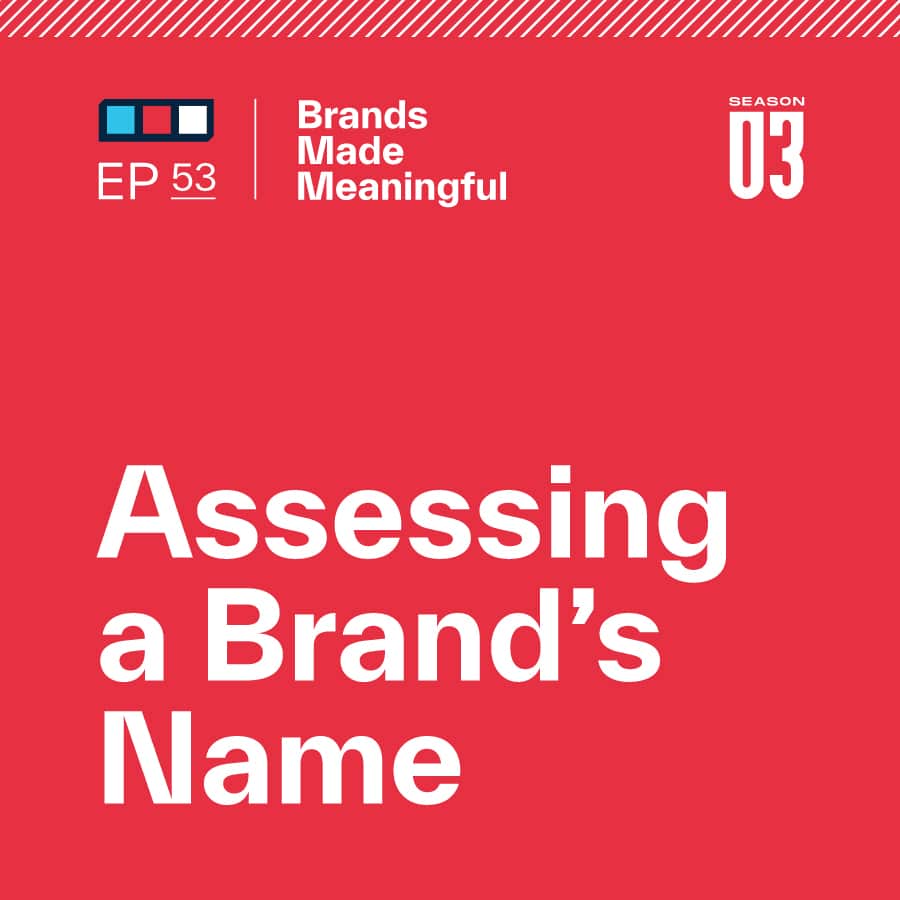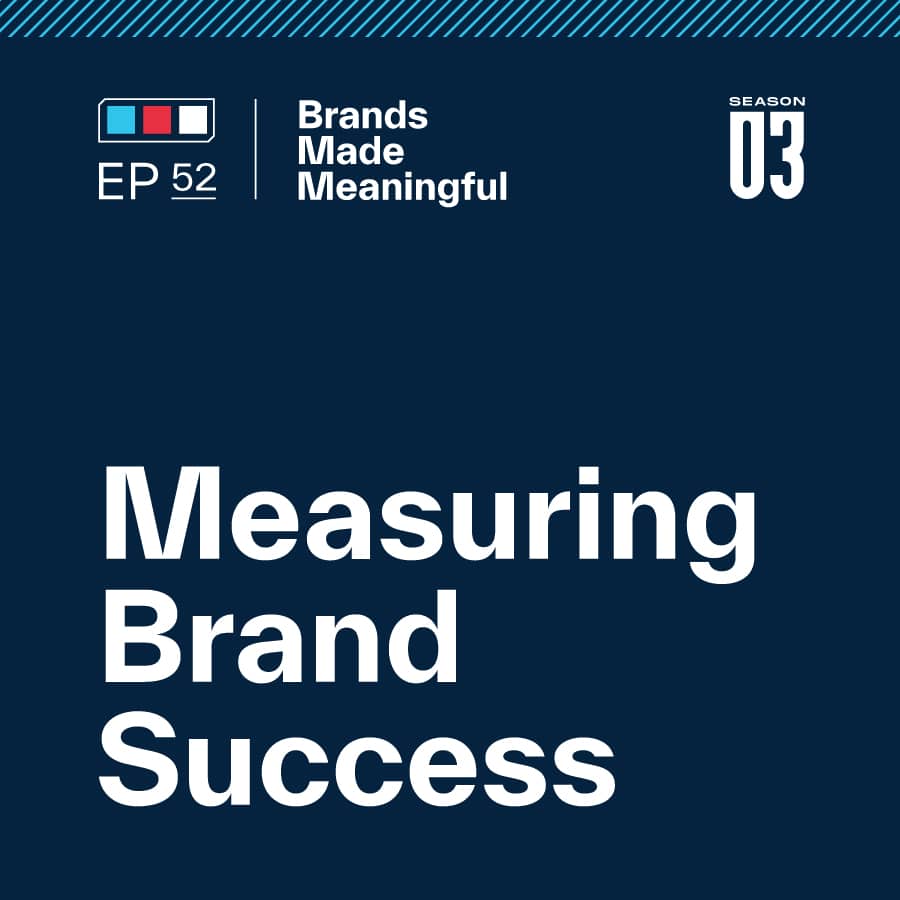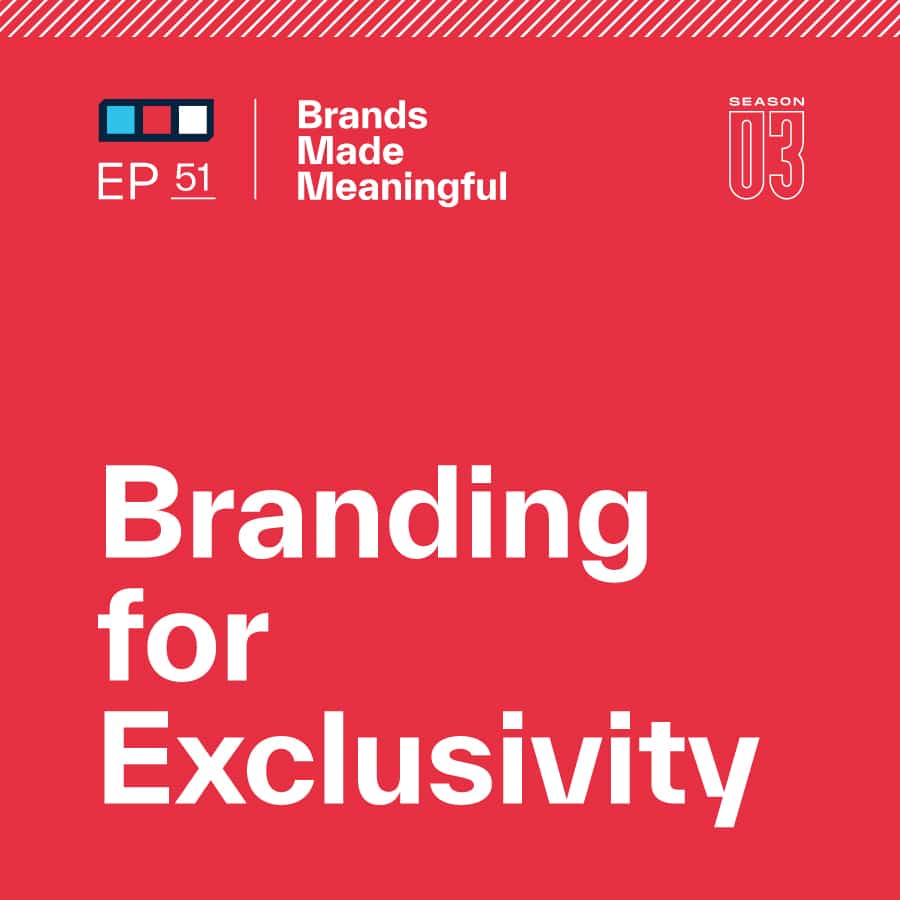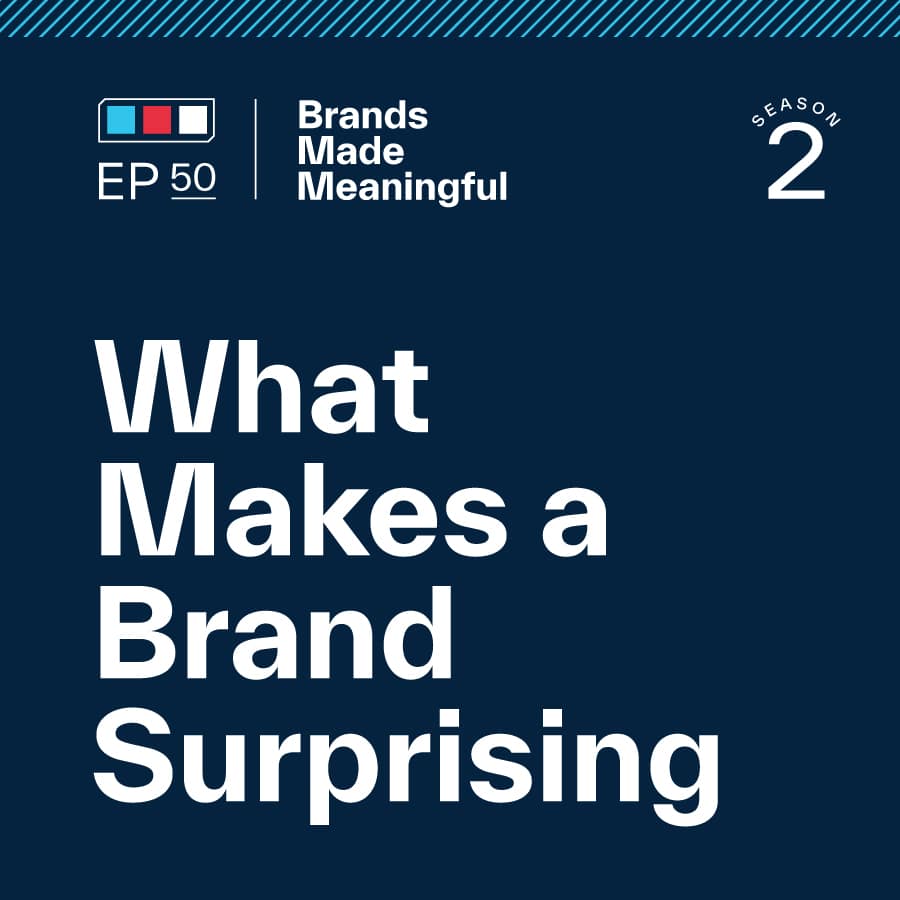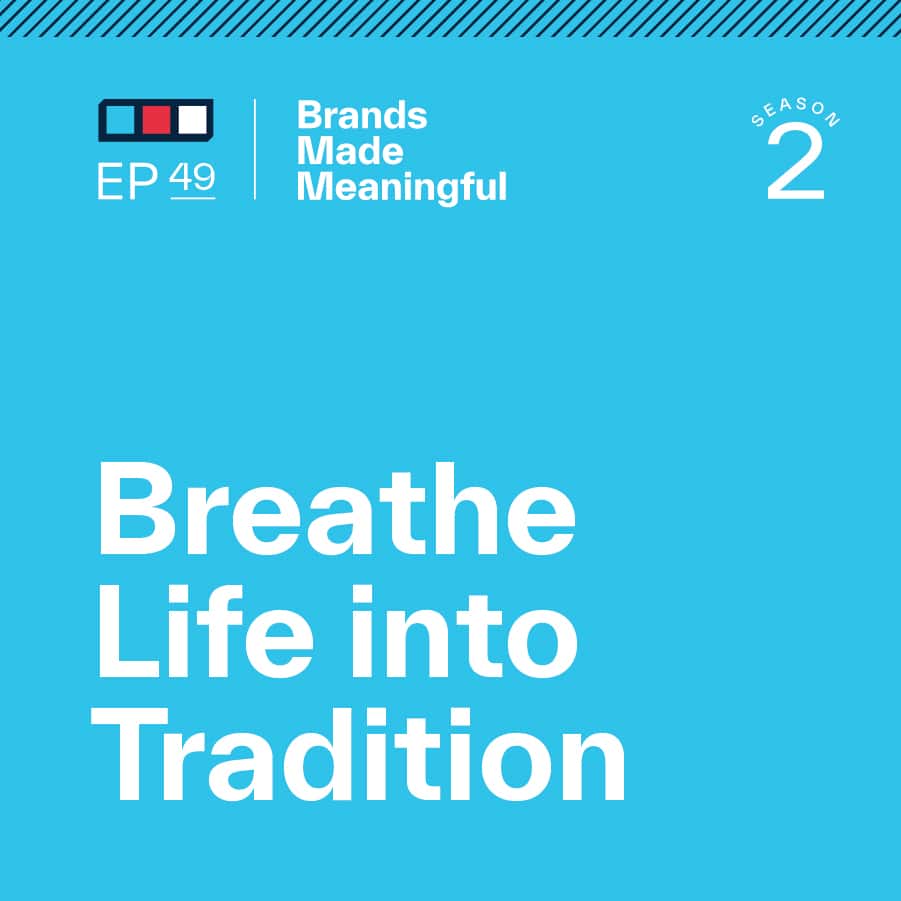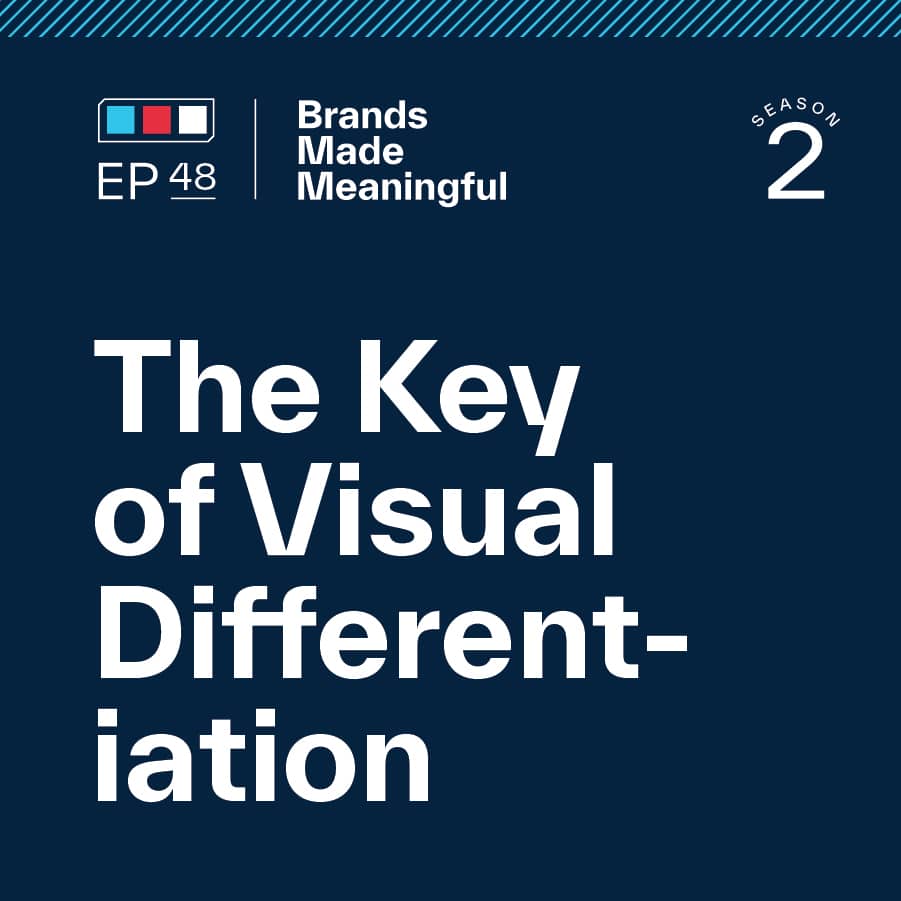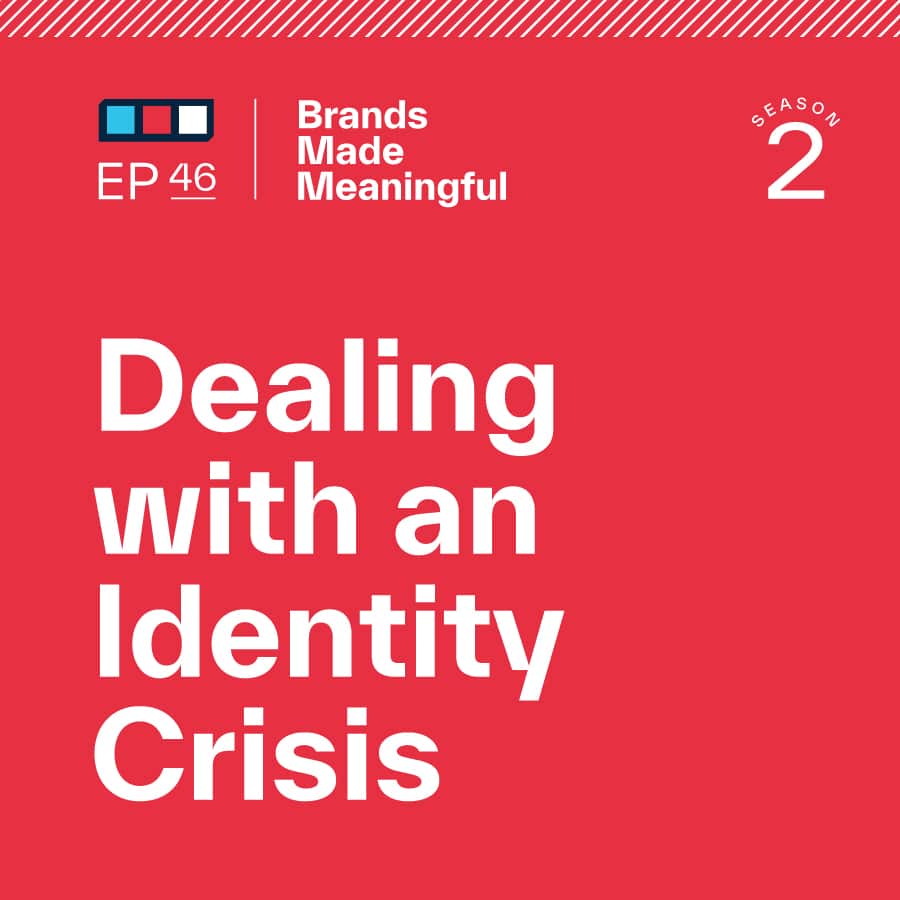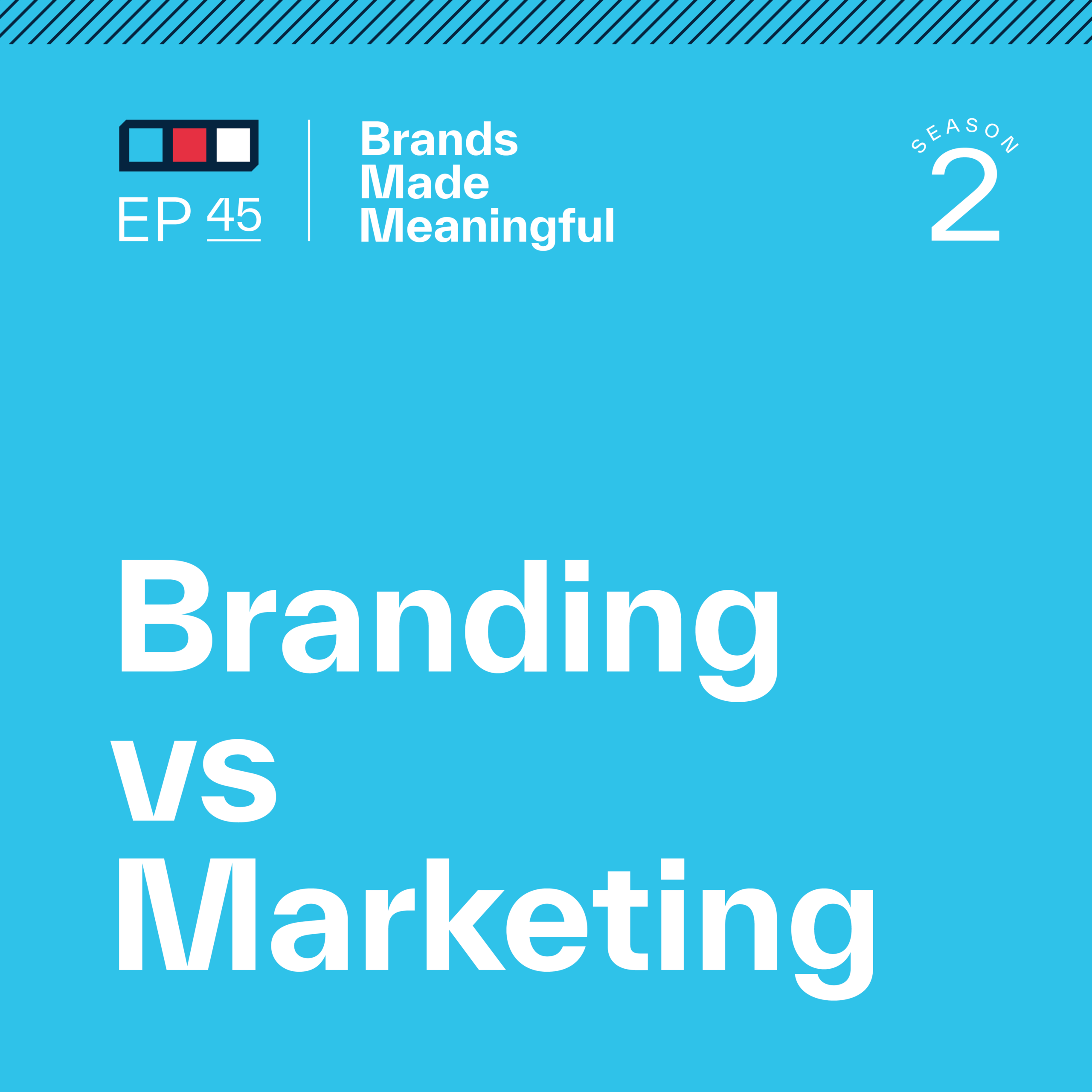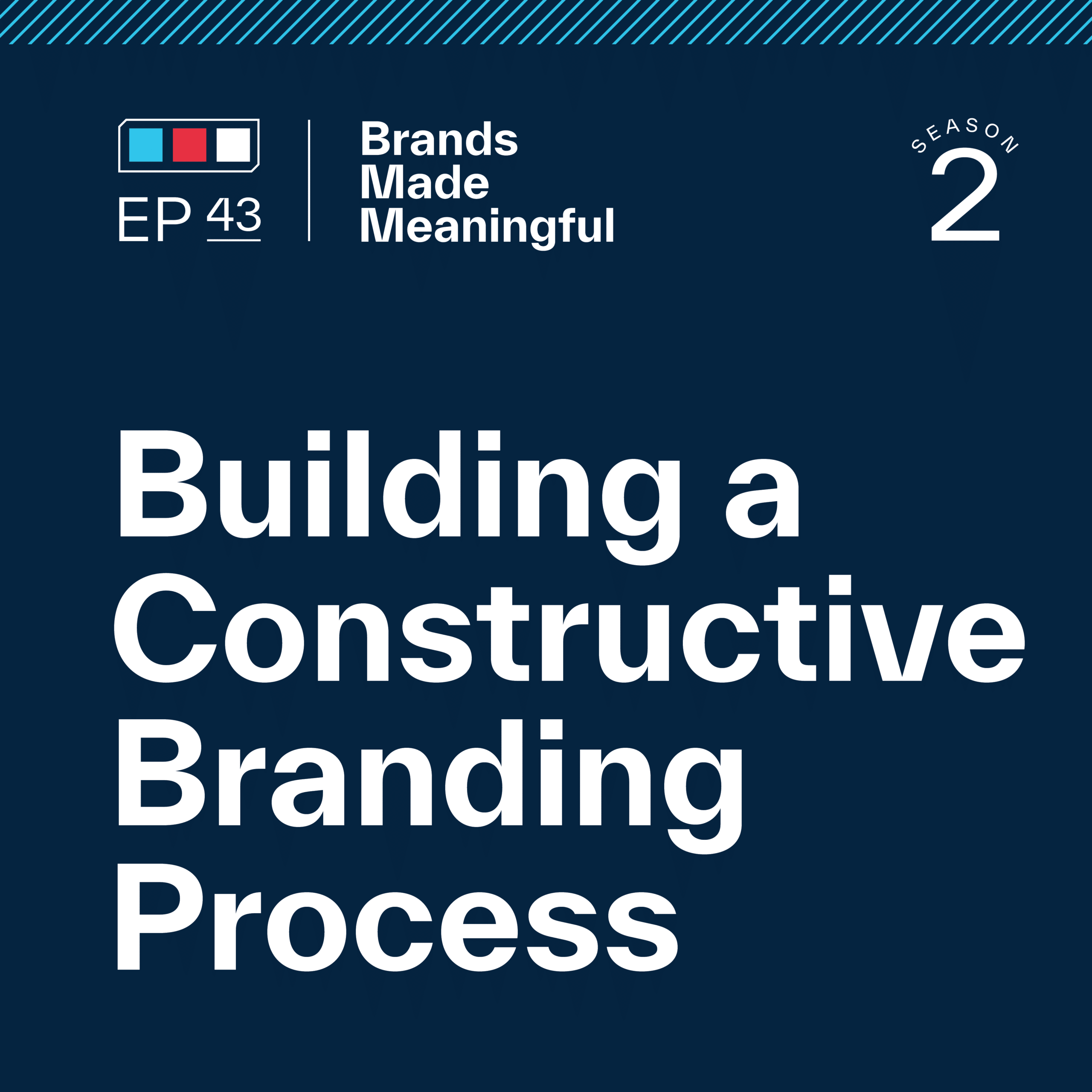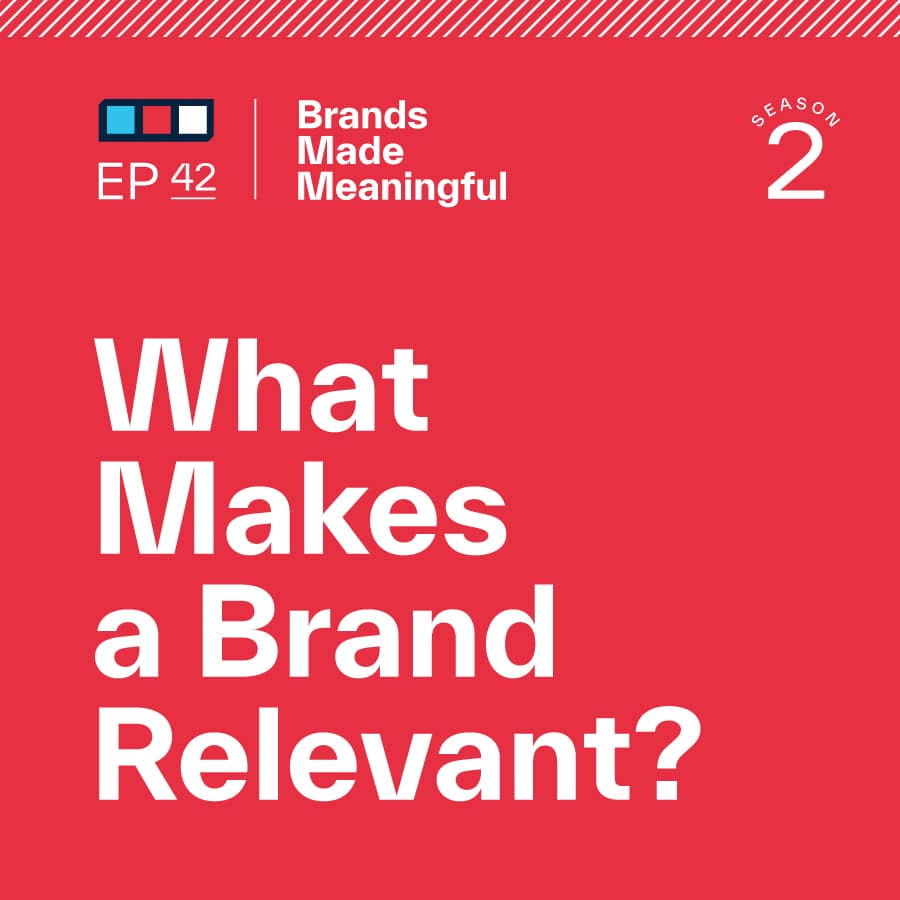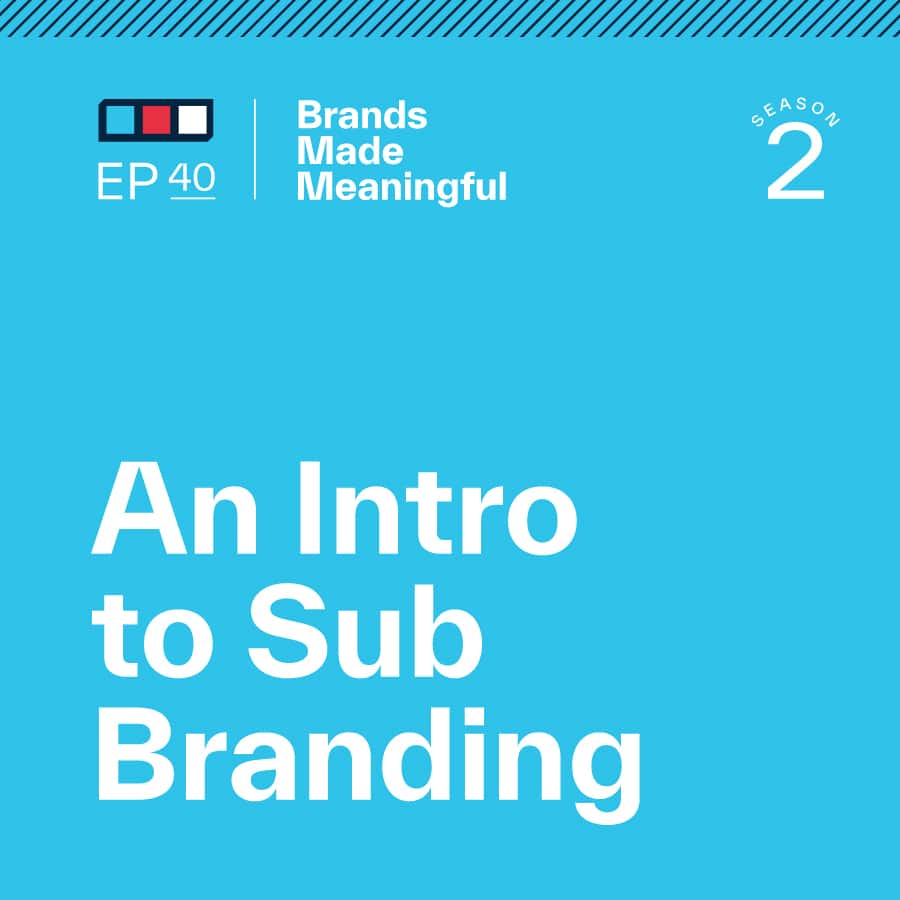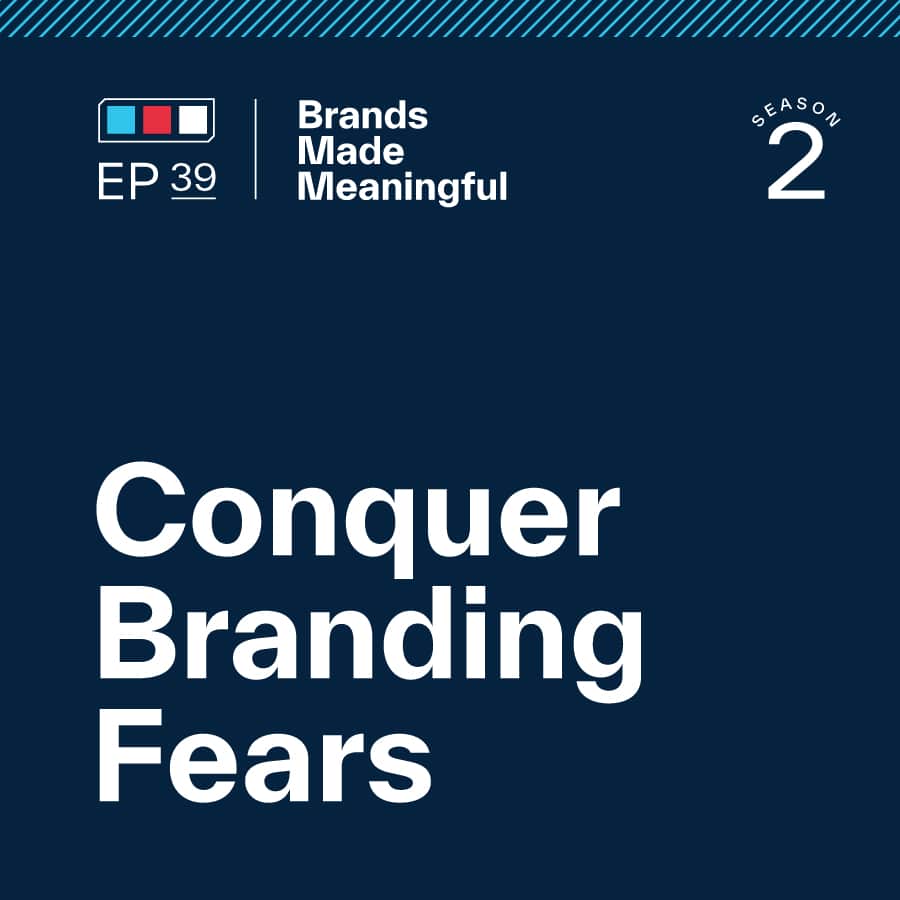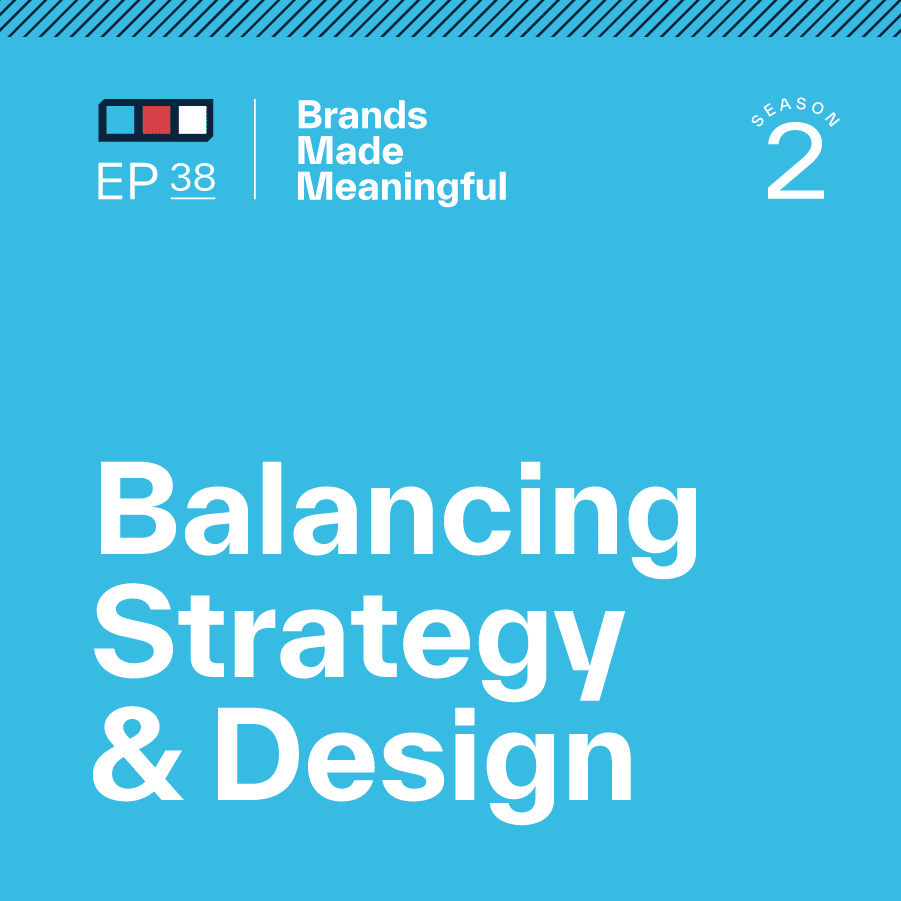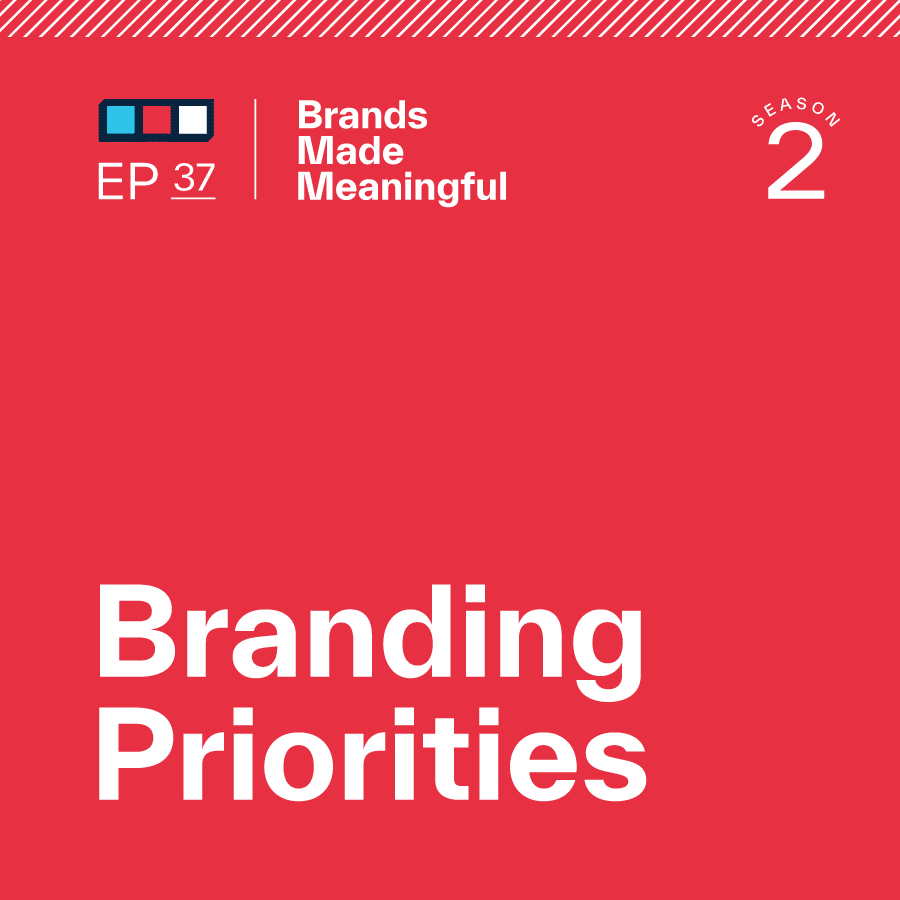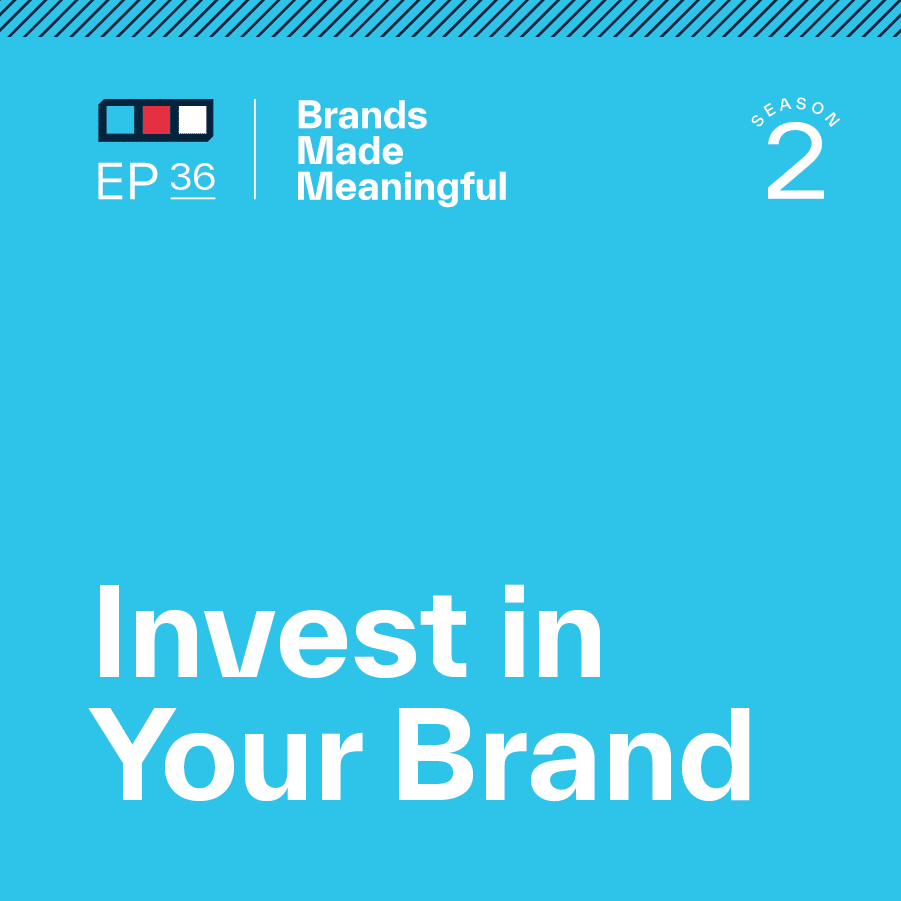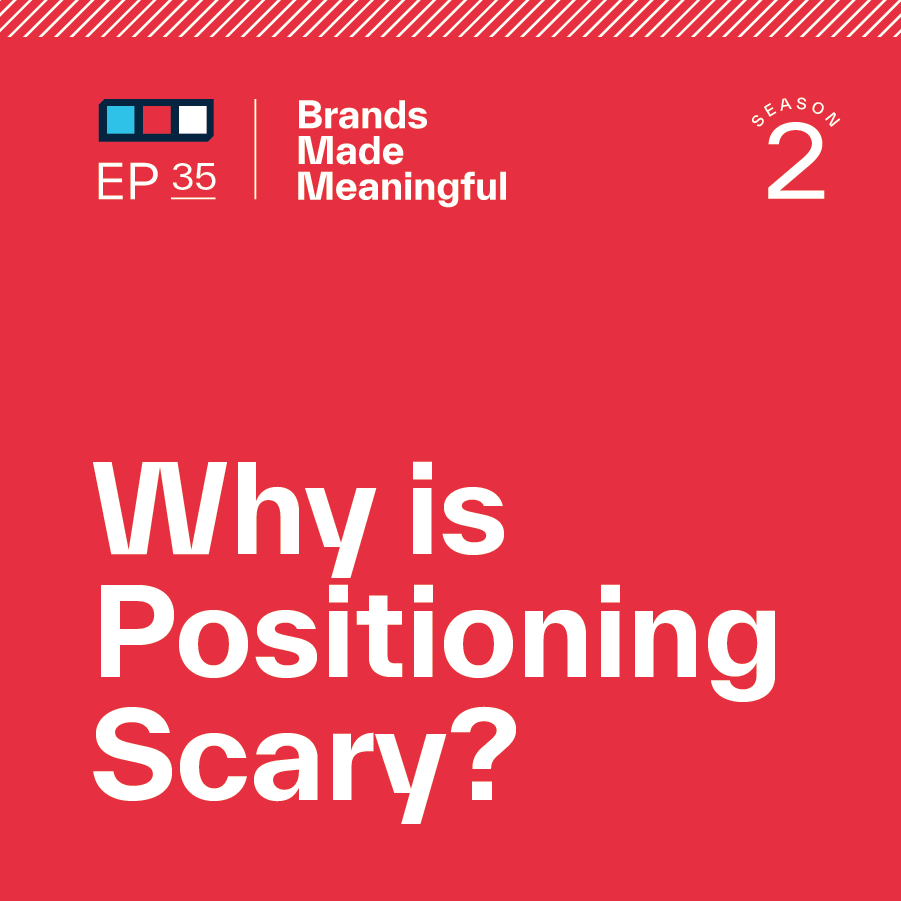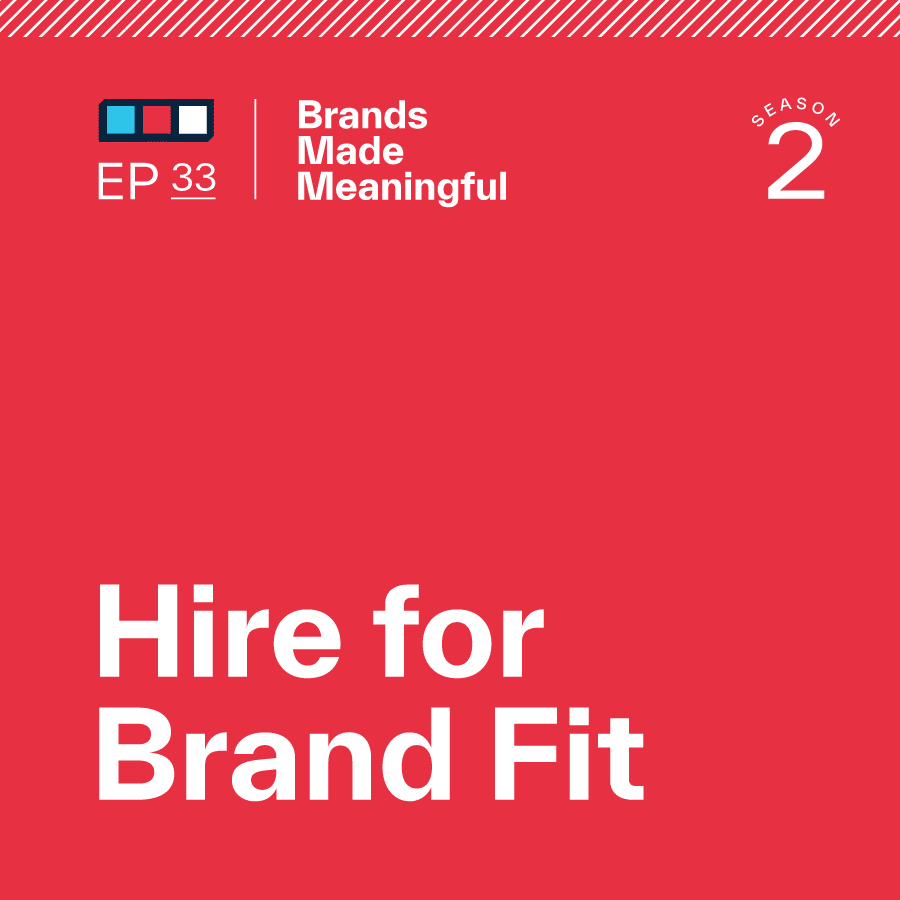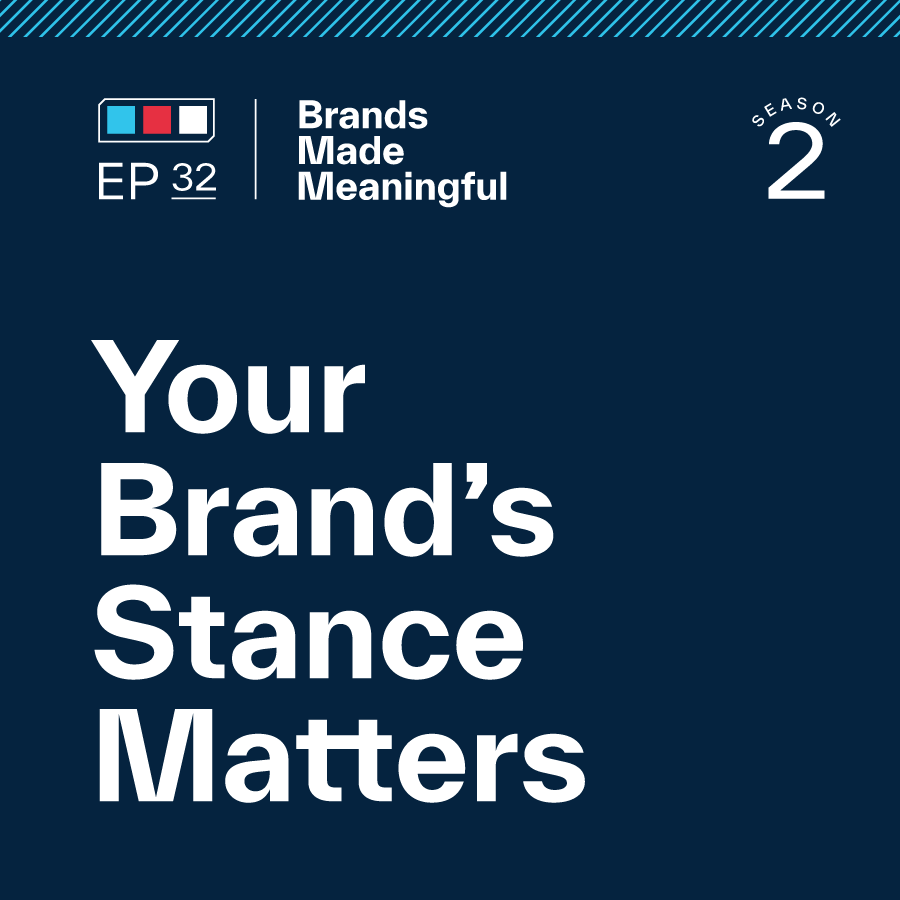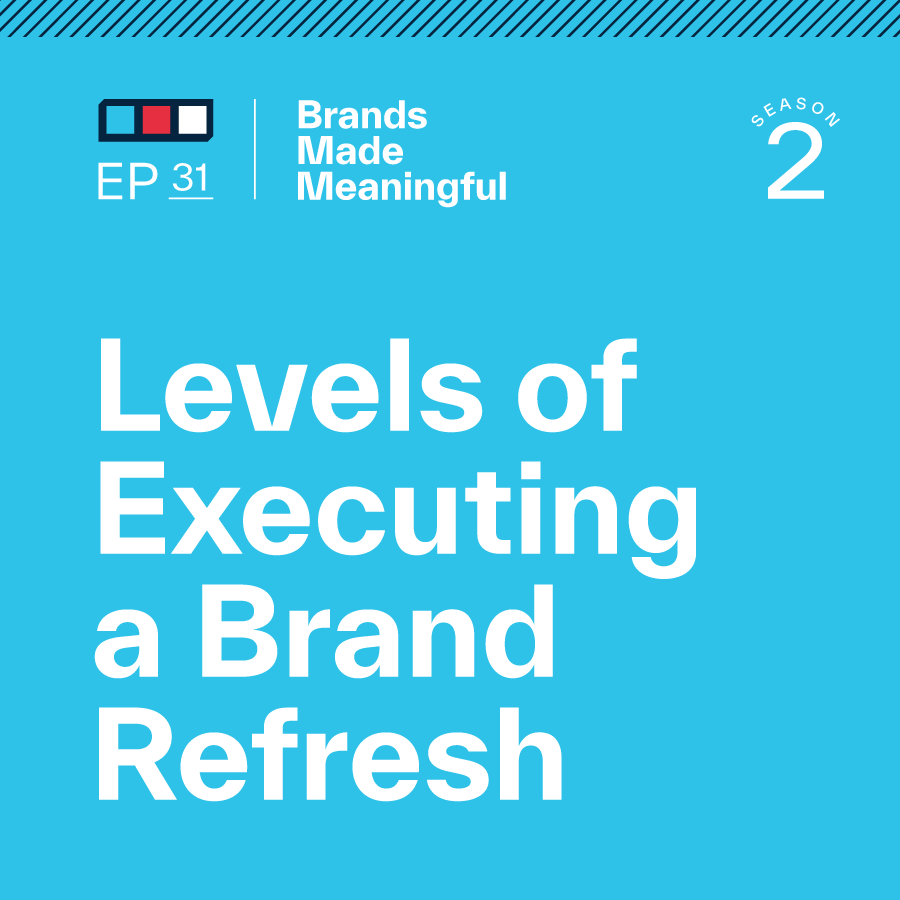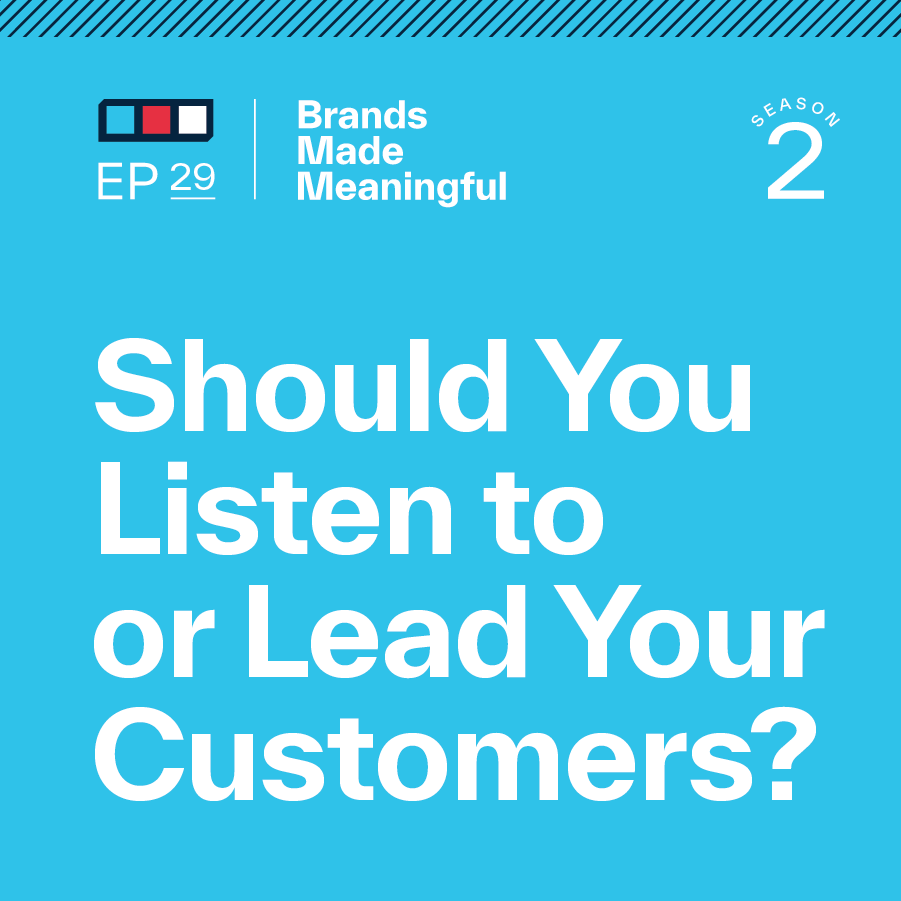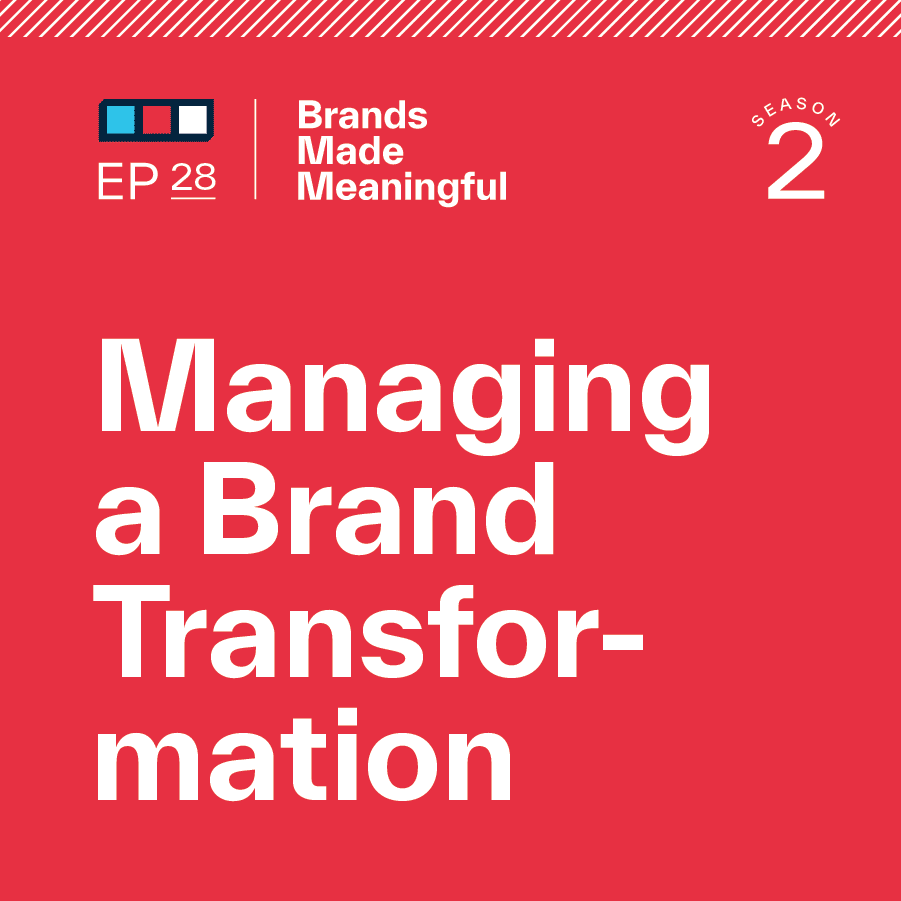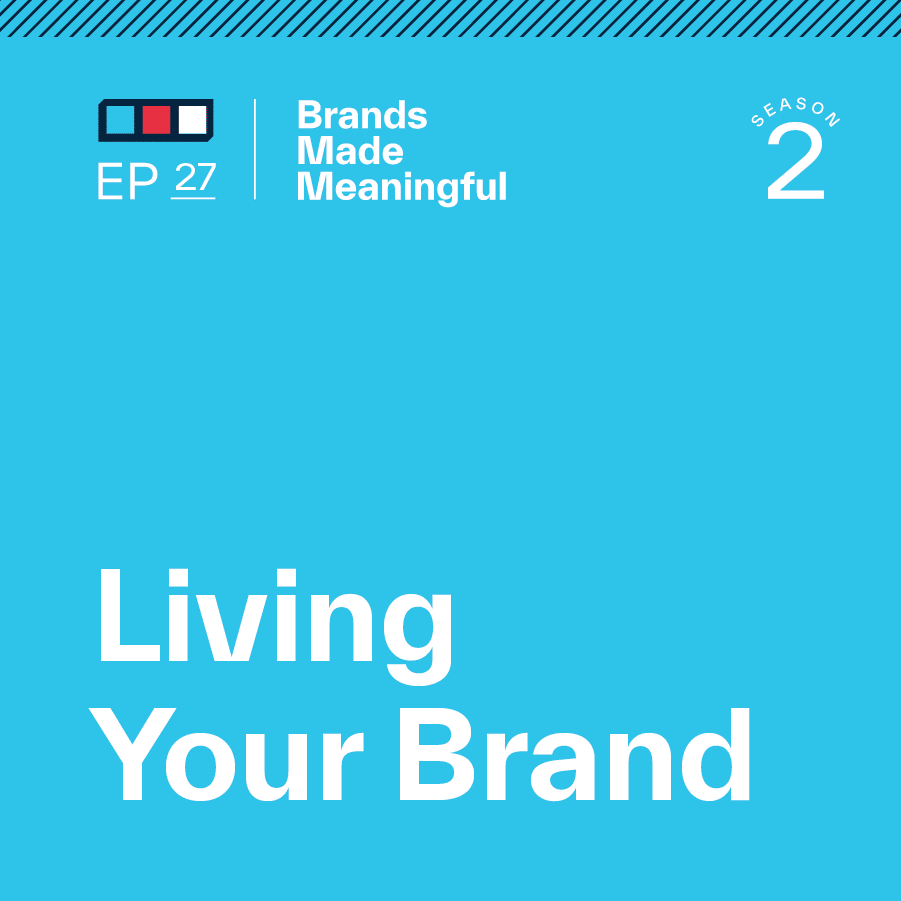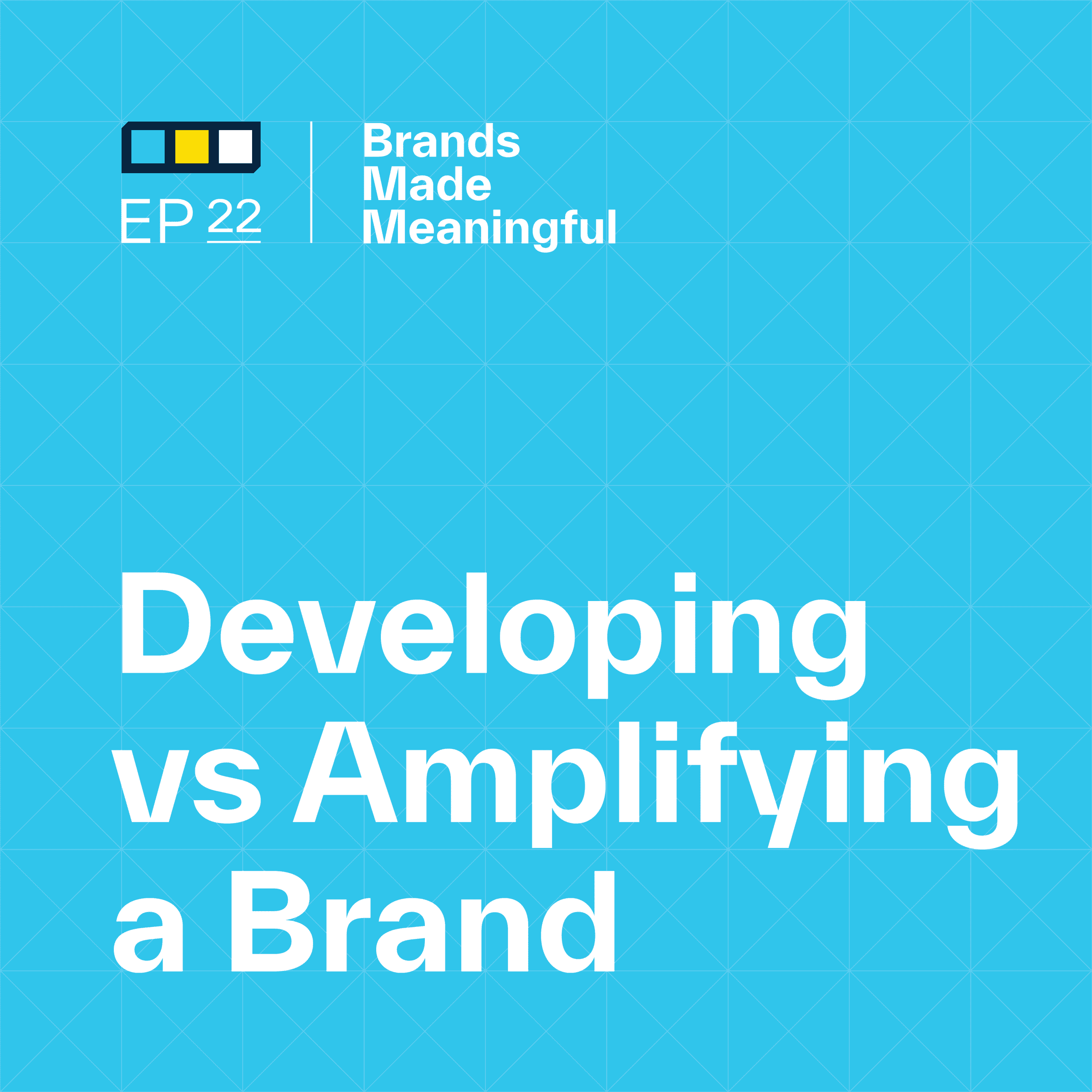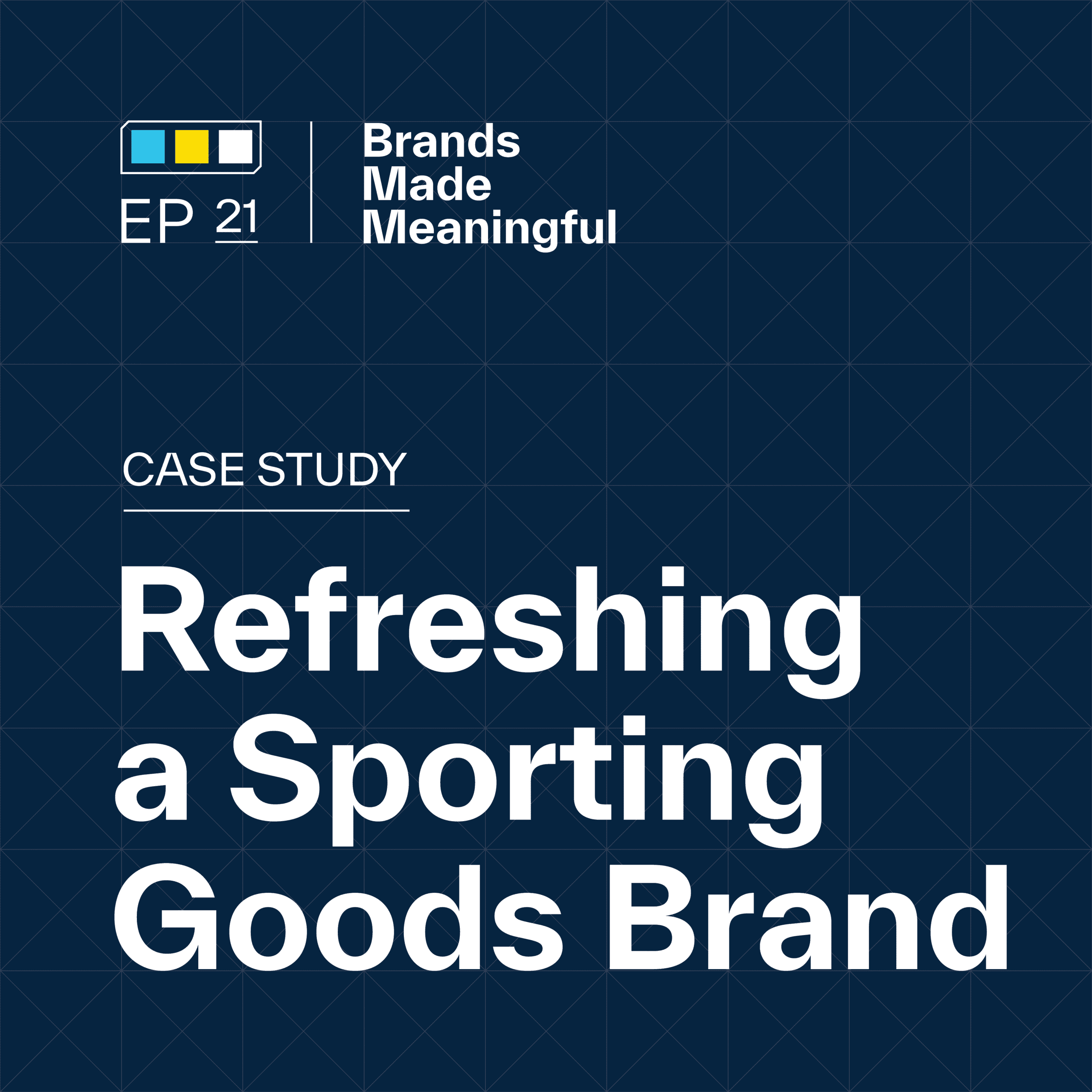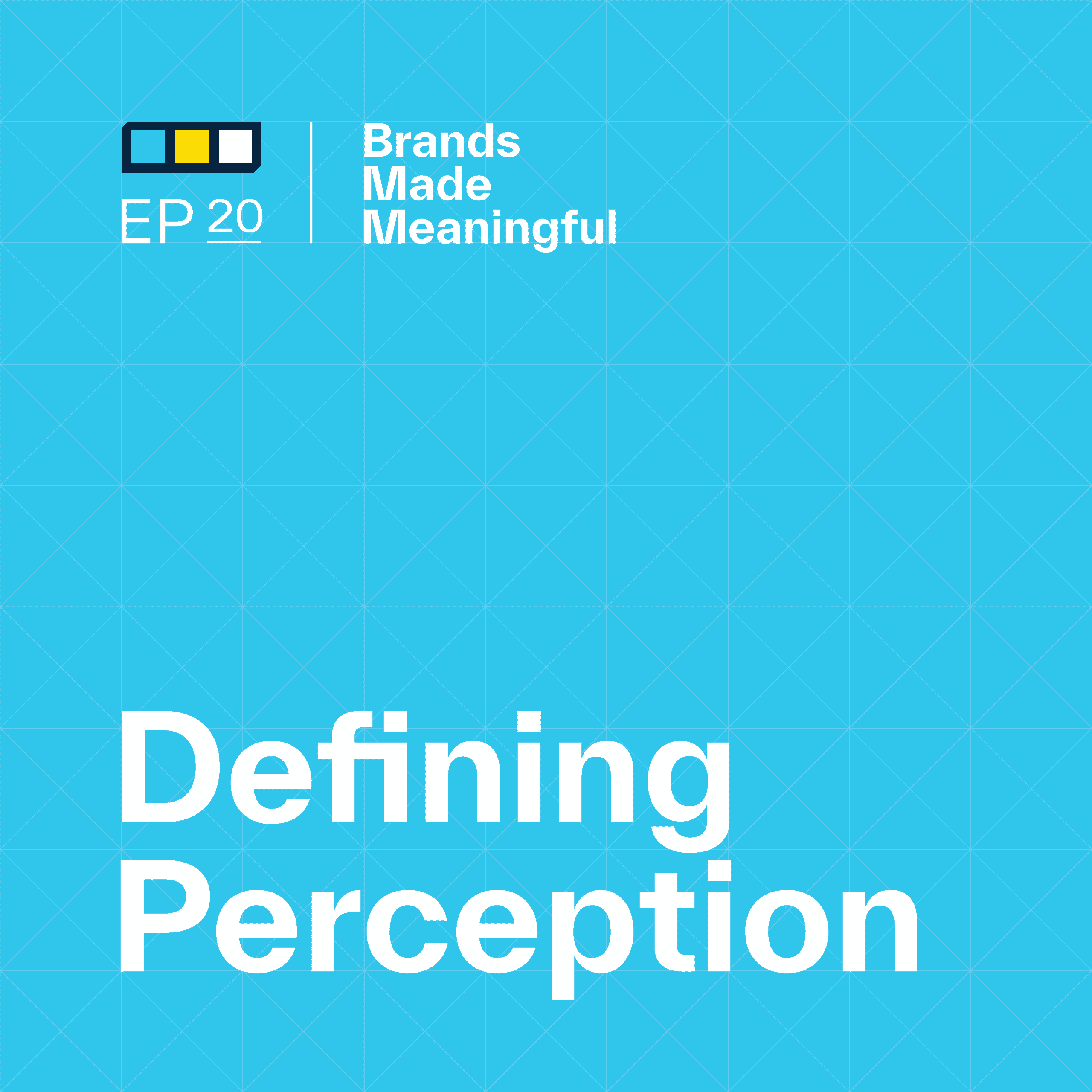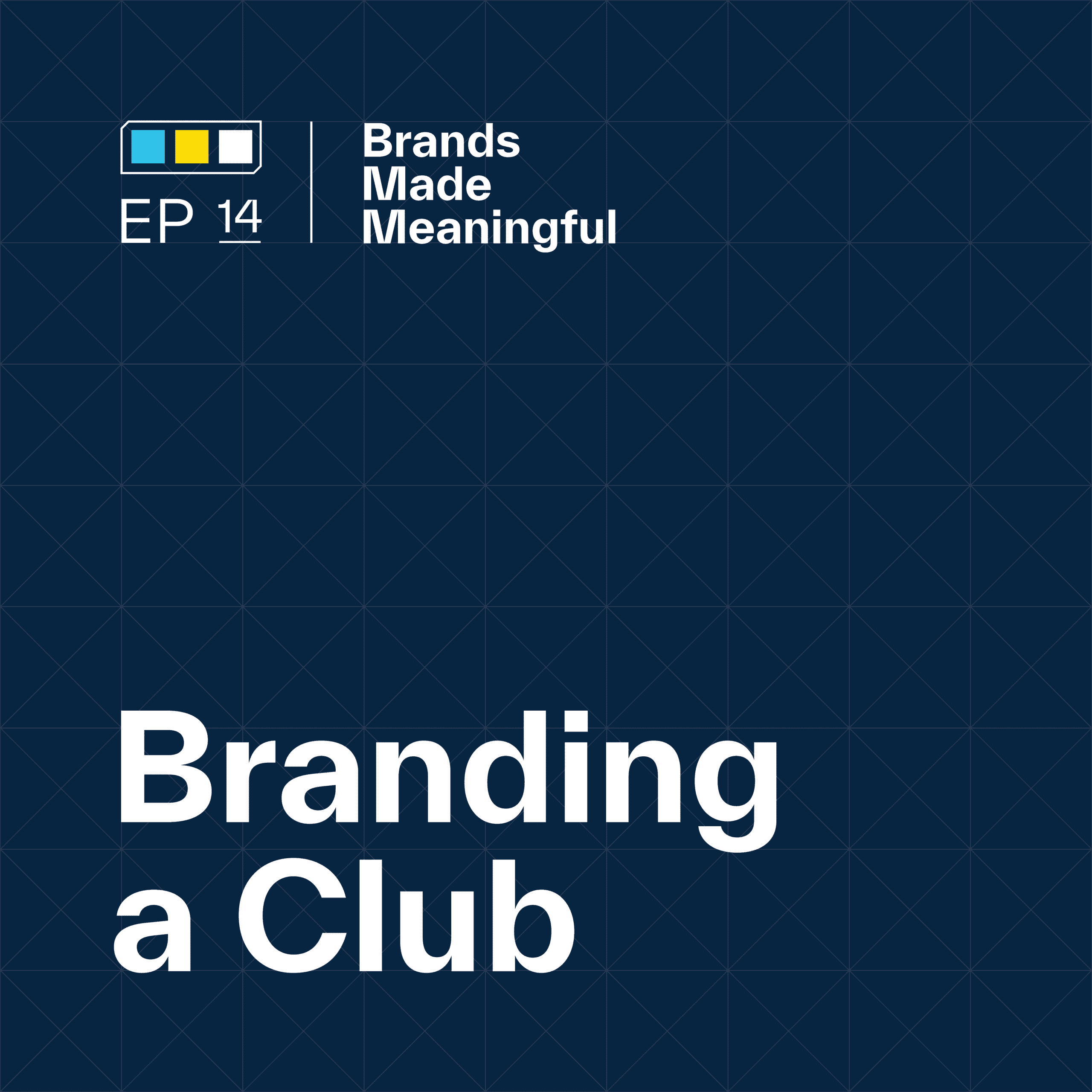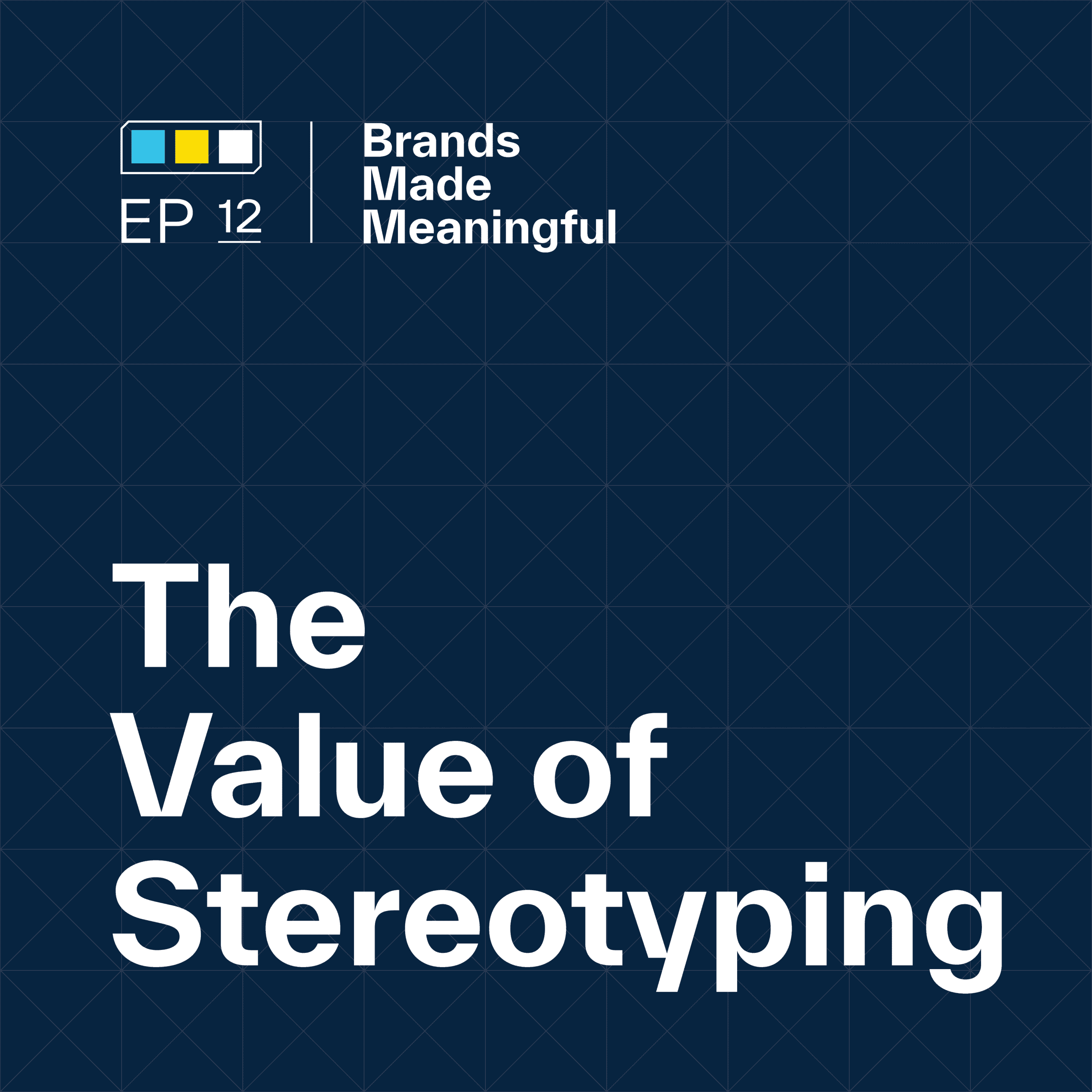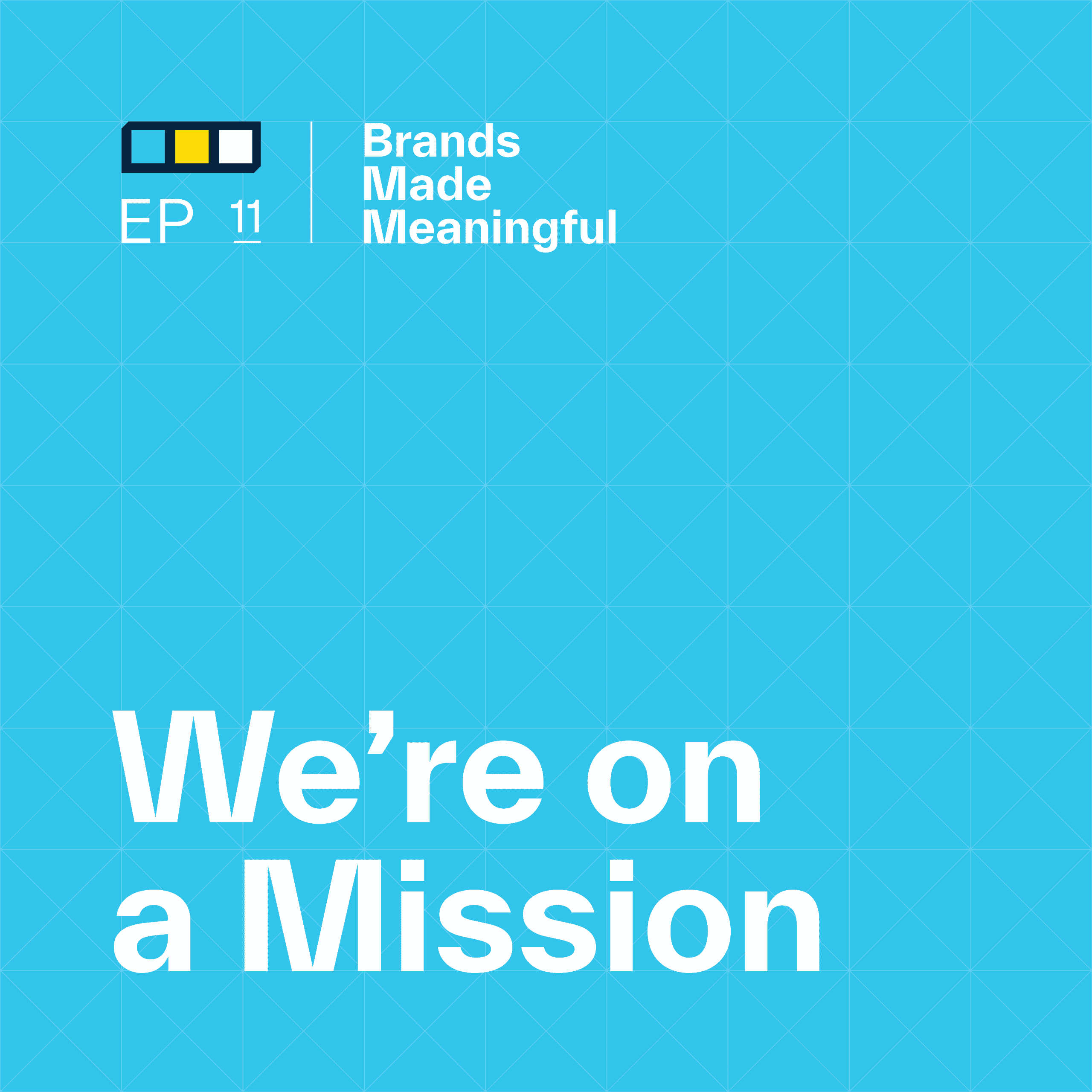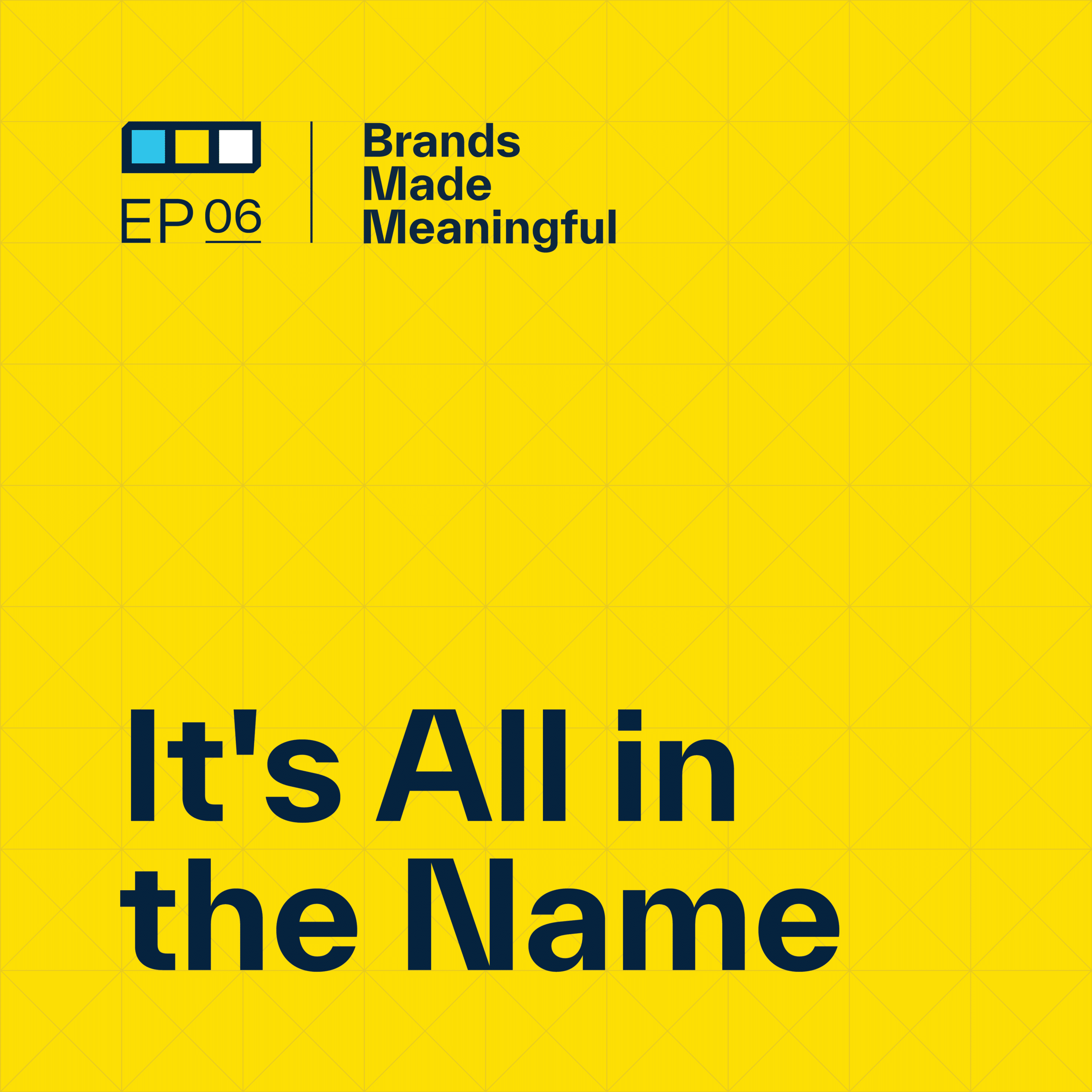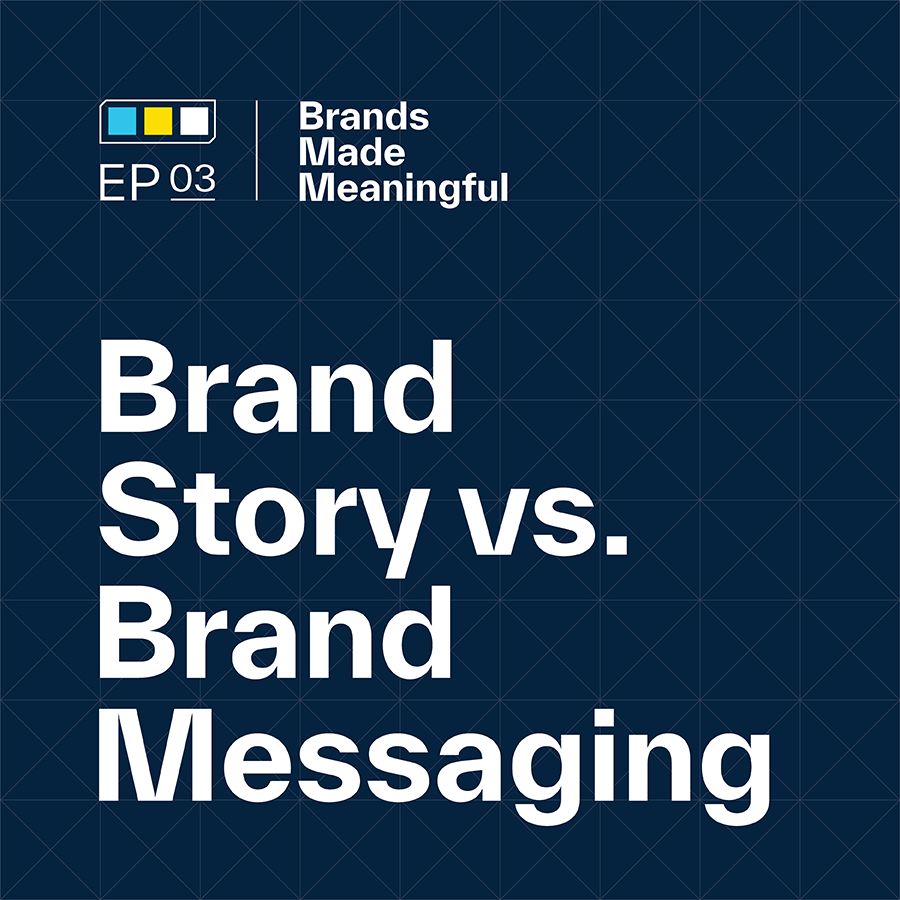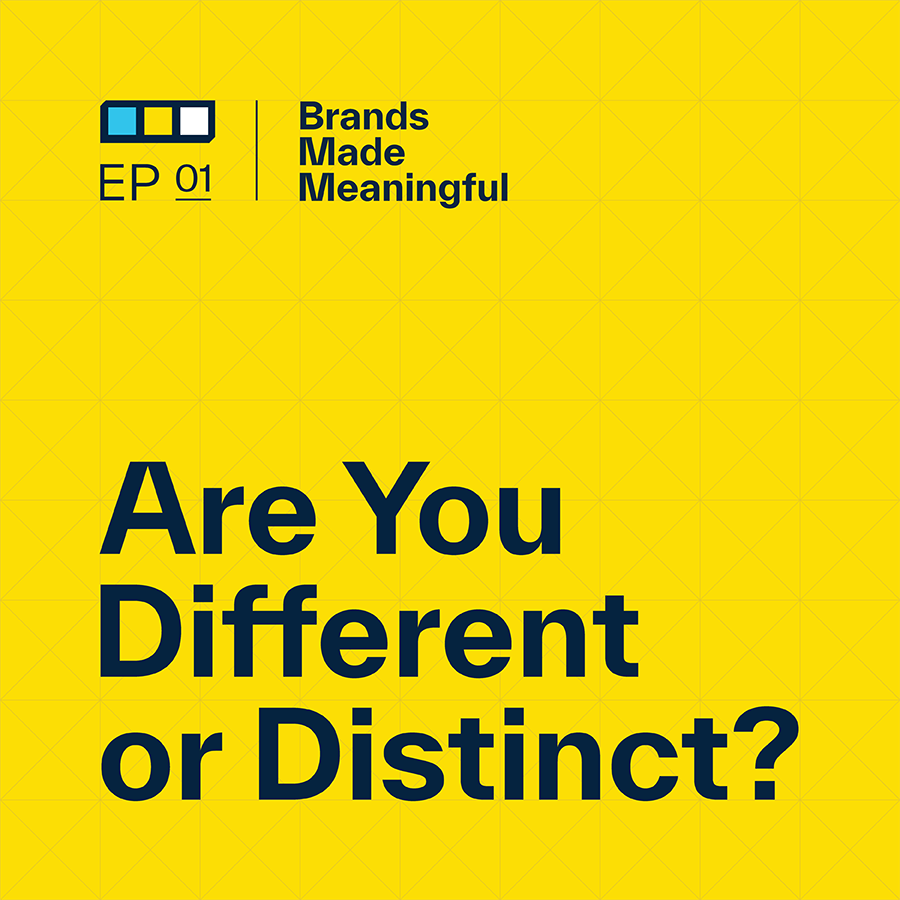EPISODE 77
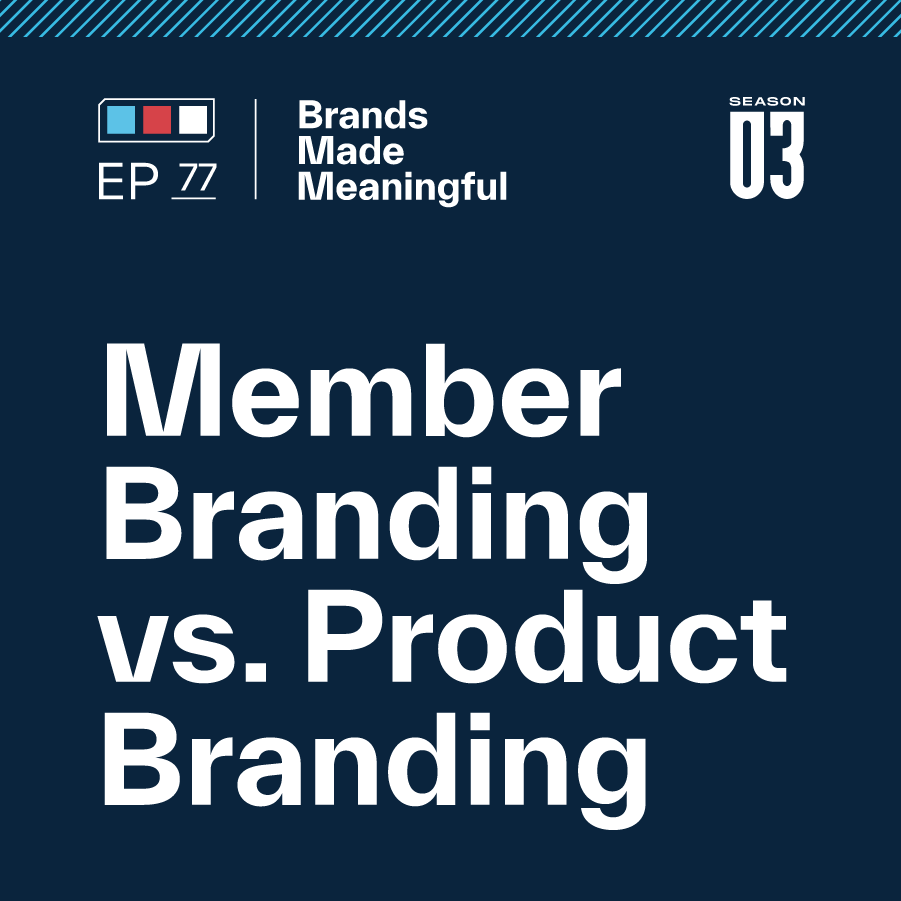
Member Branding vs. Product Branding
Episode 77
Derek and Tucker discuss the challenges their client’s have moved through when approaching differing styles of branding.
EPISODE TRANSCRIPTION
Today, I want to get into the difference between member branding and branding for maybe a product or service and why those are so different.
Tucker Because as we work with private clubs, that’s our main client when we work through branding initiatives, they have lots of accomplished people on the committees.
Expand Full Transcript
Derek Welcome to Brands Made Meaningful conversations with the team at Sussner about how purposeful branding inspires unity, identity, and powerful change for growth-minded organizations.
Tucker Derek, welcome to another episode of Brands Made Meaningful. When I was tasked with figuring out what we wanted to talk about today, I always go back to what we have seen. What challenges have our clients moved through? How does that all kind of transpire and how can we talk about that? And today I want to get into the difference between member branding and branding for maybe a product or service and why those are so different. Because as we work with private clubs, that’s our main client when we work through branding initiatives, they have lots of accomplished people on the committees. The fantastic people that we get to work with are extremely successful in different areas of business. They run multimillion-dollar organizations for products or they are in charge of a large service-oriented business and they come with a ton of experience in those sectors. And almost always we have to start explaining to them why this isn’t just like product branding and this isn’t just like service branding. This is a special form of member-oriented branding, and I kind of want to get into that today.
Derek It’s an interesting nuance. Brands are not all the same. In our experience, branding for an organization that caters to fans is a different nuance than an organization that is creating a brand specifically for their internal team members, which is very different than a brand that’s for customers and consumers and purchasers. And then the member brand is a whole other nuance. And so a lot of the steps and the processes that we go through are relatively similar. But the thinking and the understanding of who that ultimate customer is, those are for very different customer bases, which requires a different approach.
Tucker So today I’ve only outlined four. There are a bunch that we could dive into. I told you in the pre-show meeting that we were kind of going back and forth. This could be an hour-and-a-half-long conversation if we really let it. But I want to go through the key four as we work with committees, as we work with people, as people start thinking about the difference between their brand versus what should their private club brand be, what should their member brand be versus maybe what a product brand is. And we can get into both of them to help balance both of those sides.
Derek Of the four that we run into all the time, the first and foremost is the overall goal of the brand. So for a product brand, those products and sometimes the organization themselves that sells those products, they are branded for retail, they’re branded to sell, they’re branded to create a transactional service or purchase. Whereas clubs are branding themselves to attract and retain human beings.
Tucker In this key difference, we kind of think of this as more transactional versus relationship selling and how we build that within the club brand versus a product brand. If the product is really focused on that one-time purchase or maybe reoccurring transactions, you’re going to be focused on things like what is our product’s unique selling points? What are the key values and benefits of this product or service? And then how are we satisfying some specific need that someone has? We’re going to highlight that need and dive into it versus a private club brand or a member brand that’s going to be focused on developing a long-term sense of belonging, a long-term relationship and loyalty within one thing. And I know that we try to do both. There are plenty of people who focus on product branding that would say you want to do that with product brand too. Absolutely. But the key goal, if you kind of boil it all down, is not necessarily to attract a one-time purchase and move on with the product or with a member brand, but to focus on creating that sense of community, that sense of belonging. You might focus on highlighting more experiences and lifestyles rather than just this key unique offering. It’s less about the club’s tangibles. It’s more about the intangibles for them. And we’ll get into what that means in a little bit. But it’s just a different kind of objective when we start the process.
Derek When we create a brand or refine a brand or support a brand, we’re helping them with their reputation, with their perception, so that they can market themselves more effectively. So we’re not necessarily talking about marketing or selling today. However, when you look towards that ultimate exchange of some sort, the one thing that did not come up in those overall goals was price or value. Notice that it’s on a sale. It’s on value. It’s on features and benefits versus the emotional connection, the tribal belonging, etc. And there’s a through line on a lot of these that’s value. But what that value is and how that value is defined is also a different nuance between a product brand and a member brand.
Tucker So that leads us into the second one. The level of emotion is just totally different when we’re trying to brand a product or service. That level of emotion is just really focused on what is the product and what problem is that solving for someone’s specific situation rather than a private club or a member brand is way deeper than that. It’s focused on things like figuring out what identity you want to have as a person and a group of people that you really want to rally together with and focusing on values and social standings and lifestyle. It’s just much more deep-rooted into who you are rather than what you need.
Derek One of the things that we work on behind the scenes, a goal of ours and of our teams within the strategy portion of branding, is to land on what we call a brand essence. What does the brand really stand for? What is it that the member or the consumer or the customer actually wants from what you are providing them? And when you think about product brands, that’s a challenge in and of itself. Working with, say, a sporting goods company that provides products that absolutely can have an emotional connection. People are deeply committed to and emotionally connected to their favorite sports brands or the shoes that their favorite NFL players wear, etc. So there is a strong emotional affiliation that the best product brands transcend, but they’re doing it through ultimately something that you use and well, I guess if you’re my kid, you collect when it comes to shoes, you don’t necessarily wear them all because that brand of Jordan tennis shoes, for example, has transcended that. And so they also have loyalty and they also create value. But the brand essence for that product brand is different than what the brand essence is of what a club, a private club, or a member organization, provides. And getting to what that kind of through line is – again, it looks different between these two types of companies.
Tucker We’ve worked with lots of product brands and service brands over the years. I mean, we don’t have only experience in private clubs. But when you get into what that essence is, it’s always different for a product and service brand. It’s always something that’s really emotional and deep, but it’s always different. Almost every club has the same essence of community. That is what we’re selling. That is really what we’re offering here is community. It’s just a matter of what community and what makes our community special and what makes our community different than the community across the street. And that’s where you get into these nuances. We are in an incredibly competitive marketplace within private clubs. There are thousands of clubs. They almost all offer the exact same thing. They almost offer the same level of services. They offer a lot of that stuff. And I know that they would argue that offer differently, but on paper they do offer the same thing. How are you branding that differently? It’s not the services. It’s the people. It’s the community. It’s the way you feel about it. It’s the values you guys have. It’s your culture. And so your brand has to be all about that because if you just put golf clubs up there, what’s the difference between your golf club and another golf club? They’re all the same in theory, and that’s the challenge that a lot of these clubs are facing.
Derek Differentiation is how we would describe the core of what you’re talking about – how we stand out from them, especially when our amenities are the same. This brings us nicely to the third key difference that these two approaches are nuanced and different through the level of customization of how product brands, for example, in this customization for product brands, we brand them around personas, fictional people. What a typical customer or consumer might look like. Whereas the club brands are branding themselves around people. They have an existing community. They have an existing membership. And to your point, if the essence is community, that specific community is what is ultimately incredibly probably the most unique component of that club.
Tucker When we look at product and service brands, it’s really focused on stereotype personas, right? So they’re just generalizations. We’re trying to assume things because we’re trying to brand for a more broad market. Say you’re trying to sell a specific product to thousands and thousands of people versus a club or a member brand might be for 300 people. We’re not going to be general when it comes to 300 people. We’re just going to figure out exactly who those people are and build a brand for them. It’s as customized as it gets. It’s to say this is only for you in a way that’s special. So this idea of messaging and visuals and all of these components is we’re not just branding things from a creative standpoint to attract anyone and everyone. We’re branding it so that it attracts like-minded people who feel the exact same way. It’s such a small subgroup that I think this kind of gets lost in the whole conversation. We’re not just trying to attract anyone. When we work with a committee, we’re not just trying to attract anyone kind of like you. We’re trying to attract someone exactly like you. And that exact makes this just a totally different project.
Derek You could actually talk to every single one of them and have crystal clarity on what is important to your membership, what they’re excited about, what their key differences are, and who your community is.
Tucker Yeah, and you get into the excitement that they bring to that project too. And the key difference of why we love that product versus member brand, why we love member branding, is just the excitement. We’re doing interviews right now for a client, and just the level of excitement they have for what we’re trying to brand is intoxicating. It’s just like, this is so much fun versus just kind of branding a product that someone may use once or twice in their life and move on. It doesn’t have a huge impact versus that community.
Derek We talked about it. Back in that second point, the emotional investment that members have in their organization is so much deeper than the typical customer or consumer of a product. Don’t get us wrong, there are clubs that we work with that have challenges. Some clubs have opportunity. In some clubs, the general membership just is in love with their club and they’re just looking to get a little bit better, to get a little bit more vibrant, maybe to modernize a little bit. But there are also clubs that change. Membership changes. They go through an evolution and need unification where they need to be brought back together. So it’s not where everybody’s always happy all the time. But what they all are is emotionally invested in their club, in their brand, and what that stands for. And that’s a different conversation. It’s a different approach. It’s a different way that we need to think than persuading somebody to buy another pair of shoes.
Tucker So you get into that brand evolution, which is our last point, is product brands are trying to evolve their brand to better market themselves. And I believe clubs do that at some level as well. It really is focused on clubs better branding themselves or evolving their brand to better satisfy the current and future state of their membership. It’s to figure out what delights our members and how to do it in a way that’s just unique. And that’s a huge difference because you get into we can change on a dime with a product and we can be super flexible with our brand and we could rebrand all the time depending on market trends versus our brand is a fragile thing with a club because we don’t want to totally disregard the old guard or totally ignore the older generation of members who have loved this brand and continue to support it financially.
Derek I would challenge us to say that the word satisfied might even be soft. It’s like satisfying our members is a great baseline. The clubs that brand themselves successfully create an incredible level of engagement and connection, member satisfaction, and member engagement, and then attract new members. The types of members that we would like more of at our club is the key to this whole fourth point. Like you said, product brands can be nimble, they can shift on this, they can learn, adjust, they can AB tests, and they can try different things in different markets. You don’t have that opportunity with 1500 members. It’s a small sample size. It’s not to say that you only have one chance to get it right. But when you do something that has a negative consequence through it, that can be more challenging to overcome. So a lot of thought has to go into the brand development, the brand rollout, and then the continuous living and nurturing of that brand.
Tucker Your baseline is a great example of it’s not just enough to satisfy. I think satisfy is the word that I use because a lot of the general managers we work with use that word. They use member satisfaction. It’s a very topical conversation. But I think that what we’re trying to do is create rabid, avid fans for a brand that is so small. Our work with professional sports teams is so relevant to this private club industry because that’s what we’re hoping to do. Like I said, with a 300-member brand, we’re going to build something that makes them feel so special and so excited about what they’re trying to do, what they belong to, and what they are a part of. And we need to do that in a way that doesn’t make them feel like they’re being tested. This isn’t because we don’t know what’s best so we’re going to try a couple of ways to do this. You have one shot. That’s the big key difference of when a brand kind of rolls out for a club. With that one shot you either gain everyone’s trust and delight at that point or you completely disregard it and they don’t trust anything. You end up going back to the original one. They say, Don’t ever do something like that again. It’s like when your mom tells you not to touch the stove. It absolutely blows up in your face. The consequences are so much larger for this type of work than maybe product brands. It kind of gets thrown to the side when we do these projects with people who have done such a successful job with product branding that they just don’t realize that it’s hard to go back and redo this. We don’t just have another year next year to retry this.
Derek You just touched on it again. The difference in the numbers between product brands and member brands is monumental. The more we talk through this, the more that that’s resonating with me. How many pairs of shoes does a shoe company need to sell every year to make a profit and stay in business? A member organization with healthy waiting lists might not have to close one sale. They just need to continue to run that organization and over satisfy their members. You know, we talk about positioning, about hyper-focusing who your market is to tell that story. And you think about why advertising is maybe such a shotgun approach to spraying across the market some sort of messaging to then figure out who is resonating with that message where and then trying to figure out why versus having this hyper-targeted group of human beings and individuals. Inevitably branding includes visuals and people will ask us about the logo. Imagine designing a logo for a brand-new shoe company. Like I’m seeing these new lifestyle apparel brands that continue to pop up. And I think about brands like Vuori who have just kind of come on stage and having to create a brand for such a large audience because of the number of transactions that type of organization requires versus designing a logo for 300 people. Let’s say 400 for a small club with staff, which is one of the reasons why we’re so critical of the landscape of those visuals. We talked about logos a little bit in our last podcast conversation – that symbol for this brand. We’re so critical of them because most of them look the same. They have an opportunity to tell a hyper-specific story that only needs to be meaningful to three, 5, or 1500 people depending on how many members you are. So there is no excuse for that visual symbol to be generic.
Tucker And I think that you get into this. The clubs who all look the same. And there’s a lot out there that all look kind of the same. They follow the same principles. It’s one of two things. One is because they were all made at the same time, so they all kind of just went, Yeah, this is going to work. This will be fine. Let’s just do that. That’ll be fine because we don’t really know who we are. We don’t really know who we’re about. We’re just going to build something and see what happens, which is great. The second part of that is that they are branding to the persona, not the people because they’re just branding. If you tell me I work with a private club, I can probably guess who is a member of that club, high level, persona-wise. I mean, they’re very similar from a demographic standpoint. You might have a shift a little bit older, a shift a little bit younger, maybe where they’re from in the country might change some of their values a little bit. But that persona is generally the same. So if you brand on a persona like a product brand, you’re going to end up with a lot of the same brands, a lot of the same feelings, a lot of like, well, we offer golf and tennis and we also have a fitness facility and so we’re just going to brand around that, and that’s what it is. But if you brand around people, the actual people, the actual stories, the things that have actually happened there, the culture, all of those other things, they become extremely different. If anyone’s listening to this and wants to know what I’m talking about, if you go to our website and look at the case studies on there, I can make an argument that the personas for each of those clubs are almost the exact same, almost the exact same type of people. But the culture is so different. The people, the actual people are so different that the brands look so different from each other. And that’s the goal is not to necessarily just brand it for anyone and everyone. It’s to evolve what was there in a meaningful way to understand where we’re going and who that specific person is that we really want to be a part of this community. And that’s just a totally different world.
Derek Joining a club is a non-rational transactional offering. So one of the reasons why we haven’t talked about price and value. Price will outweigh or underweigh or won’t even become an issue if the offering of the brand and its community resonates strongly with somebody’s desire to belong there. We’re working with a club right now where one of the members who we just spoke with said they would rather raise their rates to maintain who they are and the type of intimacy that this specific club provides its members rather than adding another hundred members just to have the revenue and then have more crowded facilities and amenities. That is one of the reasons why a club’s brand is so critical to its success.
Tucker There’s a lot of smart people out there, right? You get a bunch of on paper, this doesn’t make sense. If you put a public golf club versus a private golf club on paper and say this one cost this and you get X, this one cost this and you get X, that’s not going to work no matter what the rationale. This all comes down to the psychology of that kind of access and prestige and status and culture and community that you’re buying into rather than just the offering. And that’s going to be a big part of what the brand needs to communicate. Because if we just lean into offering, it’s not rational, so that’s not going to help. You cannot justify the price for almost any private club based on just the offering alone.
Derek You just mentioned public golf courses and daily fee golf courses. We’ll make that a whole separate conversation because that’s not necessarily relevant to today’s topic. I would put the daily fee, the resort, and the destination golf course, with some exceptions, into more of that product approach category where they are trying to attract more transactional, more transactions, more repeat transactions versus maybe a one-time initiation of dues. Those are different approaches. Some of the high-end daily fees, when you get into how much can we charge for that experience, for that sense of I visited here, I don’t know about belong here necessarily, but I’ve been there, that’s an intriguing conversation. I think that’s a little bit separate, though. And I think if you’re listening to this and you run a daily fee course, I would be thinking about your approach in more of that product mindset strategically.
Tucker Branding is so hard if we’re just going to be honest about it. And that’s why I love it. It’s because it’s just this extremely complex thing. It’s like there is no model to say, here is how you do this. And it’s just depending on what you’re trying to achieve and how this is going to all happen. And there are so many levers at play that you need to kind of pull and slightly pull and maybe not pull at all that really makes this go. But if anyone gets a big takeaway from this, the key difference is that your club’s brand should communicate your unique values, your culture, and your experiences. That is what your brand should really be communicating. And if it’s not doing that, it’s probably not doing a good job of differentiating from the club down the street. And if we go into all of those, what should I be looking at? It’s to figure out how are we different and how are we communicating how we’re different. And most likely isn’t based on your offering.
Derek We’ve talked to club managers who have said, Well, we’re not any different from them. We charge the same. We have the same number of golf holes. We have the same workout facilities. So how do we do this? And our answer is usually the people in your organization, both on the staff side and on the membership side, are not the same as them. Your community is different and is absolutely going to be unique in the experiences that you can provide specifically to those people. And the engagement and the baseline ramped-up satisfaction that you provide to them is exactly how you can find out how to differentiate.
Tucker Side note we’ve gone through enough of these projects now that when we work with a club and they come to us and go, We don’t know what the visual side of our brand is going to be because we don’t have an on-course landmark, we just don’t even know what we’re going to do, that makes me laugh inside a little bit because I go, Well, your brand shouldn’t be your landmark anyways, because it probably doesn’t communicate the culture that you have, and it probably doesn’t delight your members in a certain way. That’s for the resort courses. That’s for the destination courses.
Derek That’s I’ve been there versus I belong here.
Tucker So until next time, this is Brands Made Meaningful. Really appreciate you listening. Let us know if you have any questions or would like to talk about anything similar.
Derek Thanks for tuning in. See you guys next week. Sussner is a branding firm specializing in helping companies make a meaningful mark, guiding marketing leaders who are working to make their brand communicate better, stand out, and engage audiences to grow their business. For more on Sussner, visit. Sussner.com.
More Episodes Like This
Reclaiming Reputation Through Brand RevitalizationEpisode 85
Derek and Tucker discuss the potential that a branding initiative can have to restore a club’s reputation.
Branding The Club with Don KovacovichEpisode 84
Don Kovacovich, GM of The Club at Golden Valley, joins Derek & Tucker to discuss the impact that rebranding has had on his club and the opportunity it presents for other clubs
Changing a Club’s Membership ModelEpisode 83
Derek and Tucker discuss key considerations and challenges when changing your club’s membership model.
Connecting a Club with its Story with Jackie CarpenterEpisode 82
Derek and Tucker are joined today by Jackie Carpenter, author of People First.
Branding a Club AnniversaryEpisode 81
Derek and Tucker discuss the unique opportunity presented by milestone and anniversary dates for private clubs.
Private Club Storytelling with Ricky L. Potts, Jr., CCMEpisode 80
Derek and Tucker have the pleasure to speak with Ricky L. Potts Jr. about how powerful storytelling can be for your club members.
Opportunity in Club Facility RenovationEpisode 79
Derek and Tucker discuss pivotal key moments in your legacy and how to transform your story through renovation.
The Evolution of Club Members with Jon LastEpisode 78
Derek and Tucker are joined by Jon Last from Sports & Leisure Research Group to discuss the evolution of club members.
Member Branding vs. Product BrandingEpisode 77
Derek and Tucker discuss the challenges their client's have moved through when approaching differing styles of branding.
The Role of a Private Club's LogoEpisode 76
Derek and Tucker take a look back on private club logos they've designed over the years and explain the strategic reasons behind their choices.
Club Brand GovernanceEpisode 75
Derek and Tucker divulge the steps to evolving your brand while retaining your core values.
Seasonal Member MerchandiseEpisode 74
Derek and Tucker take a look at crafting specific merch to celebrate landmarks and special times of the year.
Who is Sussner?Episode 73
Derek and Tucker take a break from talking shop to talk about who they are and what they stand for.
Club Identities Beyond AmenitiesEpisode 72
Derek and Tucker discuss what it takes to stand out in unique ways for your club.
Little Things Mean EverythingEpisode 71
Derek and Tucker take a look at the often missed and easy to overlook.
Build Flexible Brand SystemsEpisode 70
Derek and Tucker break down the building blocks for long lasting branding.
The Club at Golden ValleyEpisode 69
Derek and Tucker take a close look at one of their recent rebrands.
When to Launch a Club RebrandEpisode 68
Derek and Tucker break down how to find the perfect timing when launching a club rebrand.
Steps to Launching a Club RebrandEpisode 67
Derek and Tucker break down the steps to take and the reasons why you should consider a club rebranding.
Brand Marketing vs. Brand DesignEpisode 66
Derek and Tucker define the line between marketing and design and how they intersect to inform one another.
Building Brand GuidelinesEpisode 65
Derek and Tucker show us how to build infrastructure guidelines to unify your brand experience across the board.
Club Identity SystemsEpisode 64
Derek and Tucker cover what Identity Systems entail and how to discern between internal and external methodologies.
Navigating Branding With a BoardEpisode 63
Derek and Tucker bring clarity to uniting your company under one cohesive vision.
Putting a Committee TogetherEpisode 62
Derek and Tucker assemble your need-to-know facts when putting together your committee.
The Guiding Principles of Private ClubsEpisode 61
Derek and Tucker go over the top ways private clubs can find the balance between pleasing old members while attracting new ones, all while making moves towards the future.
How Color Affects PerceptionEpisode 60
Derek and Tucker cover how to best convey your business with color.
Brand EcosystemsEpisode 59
Derek and Tucker break down how to craft effortless experiences when considering your brand as a whole.
6 Types of Brand TransformationEpisode 58
Derek and Tucker dive into 6 distinct types of transformations for a wide range of brands.
Tournament Branding For ClubsEpisode 57
Derek and Tucker discuss designing and delighting your club members with tailored events.
Brand Promoters & DetractorsEpisode 56
Derek and Tucker discuss how high level promoters increase your NPS and how to turn the tides on your detractors.
The Loudest Voices in the RoomEpisode 55
Derek and Tucker talk about gathering feedback while prioritizing every voice.
Determining A Primary AudienceEpisode 54
Derek and Tucker discuss if and when you should be honing in on your audience vs. casting as wide a net as possible.
Branding For ExclusivityEpisode 53
Derek and Tucker discuss the intricate process of naming your brand.
Measuring Brand SuccessEpisode 52
Derek and Tucker discuss how we measure our success in branding and a few key KPIs that help us understand our impact.
Branding For ExclusivityEpisode 51
Derek and Tucker breakdown how brands can create the perception that they are exclusive and only for a certain type of consumer.
What Makes A Brand SurprisingEpisode 50
Derek and Tucker break down the Sussner formula that we believe leads to a surprising brand.
Breathe Life Into Brand TraditionEpisode 49
Derek and Tucker discuss the intricacies and common pitfalls of branding for Private Golf Clubs.
They Key of Visual DifferentiationEpisode 48
Derek and Tucker break down the importance of differentiating your brand on a visual level.
Branding For Private GolfEpisode 47
Derek and Tucker discuss the intricacies and common pitfalls of branding for Private Golf Clubs.
Dealing With An Identity CrisisEpisode 46
Derek and Tucker breakdown how to identify and remedy a brand's identity crisis throughout thoughtful and intentional brand management.
Branding vs MarketingEpisode 45
Derek and Tucker discuss the differences between Branding and Marketing and how to make the two compliment each other.
Build Your Brand's FoundationEpisode 44
A brand's foundation is a critical element in being successful in the long-term.
Building a Constructive Branding ProcessEpisode 43
Derek and Tucker break down the steps required to build the most constructive and meaningful branding process.
What Makes a Brand Relevant?Episode 42
Relevance is a key piece of a brand's identity for creating clarity and connection.
Your Right to WinEpisode 41
Derek and Tucker discuss the “Right to Win” and the odds of your brand's success within your target market.
An Intro to Sub BrandingEpisode 40
Derek and Tucker discuss the nuances of developing sub-branding and strategies.
Conquer Branding FearsEpisode 39
Derek and Tucker dive into how to overcome the fear of change and the nature of constant refinement of your brand.
Balancing Strategy & DesignEpisode 38
Great strategy is a necessary foundation for great design—and great design brings great strategy to life.
Branding PrioritiesEpisode 37
Branding priorities are the actions and initiatives that shape or enhance a brand's identity, perception, and market position.
Invest in Your BrandEpisode 36
Investing in your brand benefits your company as a competitor in the marketplace, builds trust with customers, increases perception of quality, and drives employee engagement.
Why is Positioning Scary?Episode 35
Narrowing the brand's position is really a strategic decision to focus the brand's offerings, messaging and target audience on a specific niche or segment within the market.
What Are Brand Consultants?Episode 34
Derek and Tucker discuss the importance of hiring expertise with a wider breadth of knowledge than just visuals.
Hire for Brand FitEpisode 33
Hiring people that fit your brand is key in order to maintain brand authenticity, positive culture, and consistent messaging.
Your Brand’s Stance MattersEpisode 32
Your stance can help define your brand from a core level and make branding, hiring, and marketing not only easier, but more meaningful.
Levels of Executing a Brand RefreshEpisode 31
If you have a brand strategy in place, how do you execute it?
The Role of Features & BenefitsEpisode 30
Derek and Tucker discuss the importance of features and benefits within the context of branding, selling, and marketing your products and services.
Should You Listen To or Lead Your Customers?Episode 29
Within the challenge of any rebrand is the challenge of managing customers' perception of change.
Managing a Brand TransformationEpisode 28
Episode 28 discusses the highlights and challenges of rolling out a new brand, both internally and externally.
Living Your BrandEpisode 27
Your brand is not this shiny trophy on the shelf. It is something that you are molding every single day.
What Makes a Brand Authentic?Episode 26
Season 2 starts off with a discussion about building authentic brand experiences, both internally and externally.
Reviewing your Competition's CreativeEpisode 25
Derek and Tucker discuss the process of reviewing your competitors' creative strategy to better position your brand within the market.
Interviewing your Audience for InsightsEpisode 24
This episode details the process and benefits of interviewing your audience as part of the branding process.
Assumption ReversalEpisode 23
Derek and Tucker discuss how we change our thoughts and get into a different mindset to refine and revise our branding.
Developing vs. Amplifying a BrandEpisode 22
Another way to say it is, development is building and crafting your brand story, and amplification is then telling it.
Refreshing a Sporting Goods BrandEpisode 21
This episode shares the steps behind Sussner’s work in refining the Shock Doctor brand.
Defining PerceptionEpisode 20
Derek and Tucker discuss the positive and negative impacts of brand perception.
What is a Brand?Episode 19
Derek and Tucker discuss what defines a brand and what makes them successful.
Branding Golf Courses vs Golf ClubsEpisode 18
Derek and Tucker further hone in on golf course design.
Refreshing a Golf CourseEpisode 17
Derek and Tucker discuss the bar for golf course design – and how to push past it.
Let’s Talk Taglines Episode 16
Derek and Tucker talk taglines in today's episode.
Refreshing an Athletic DepartmentEpisode 15
Derek and Tucker sit down today to discuss what logos mean within branding.
Branding a Club Episode 14
Derek and Tucker discuss how to brainstorm branding a club.
An Intro to Internal Branding Episode 13
Derek and Tucker discuss the power behind internal branding.
The Value of Stereotyping Episode 12
Derek and Tucker sit down today to discuss the meaning of stereotyping within the branding world.
We’re on a Mission Episode 11
This episode digs into the rallying cry for the greatness your team is going to accomplish.
Aren’t Brands Just Logos? Episode 10
Derek and Tucker sit down today to discuss what logos mean within branding.
The Business You Are Really In Episode 09
Derek and Tucker sit down today to discuss how to discover what business you are really in to better understand your mission statement.
Clarity of Vision Episode 08
Derek and Tucker discuss the importance of looking ahead towards the big picture to better hone the purpose behind what we do in the now.
Branding B-2-B Environments Episode 07
Derek and Tucker discuss the Branding of Spaces.
It’s All in the Name Episode 06
Derek and Tucker discuss what a name can say - and not - about your company.
Delving Into Branding Data Episode 05
Derek and Tucker jump into the discovery phase of branding before it hits the drawing board.
Content Made Meaningful Episode 04
Today Derek and Tucker discuss the concepts within content and its common misconceptions such as the phrase "Content is King."
Brand Story vs. Brand Messaging Episode 03
Your story matters.
Visuals That Take The Cake Episode 02
Derek and Tucker sit down to discuss visual impact and what that could mean for your brand.
Are You Different or Distinct? Episode 01
It's not about being the only option, it's about being the right option. Join Derek and Tucker as they discuss Differentiation & Distinction.



